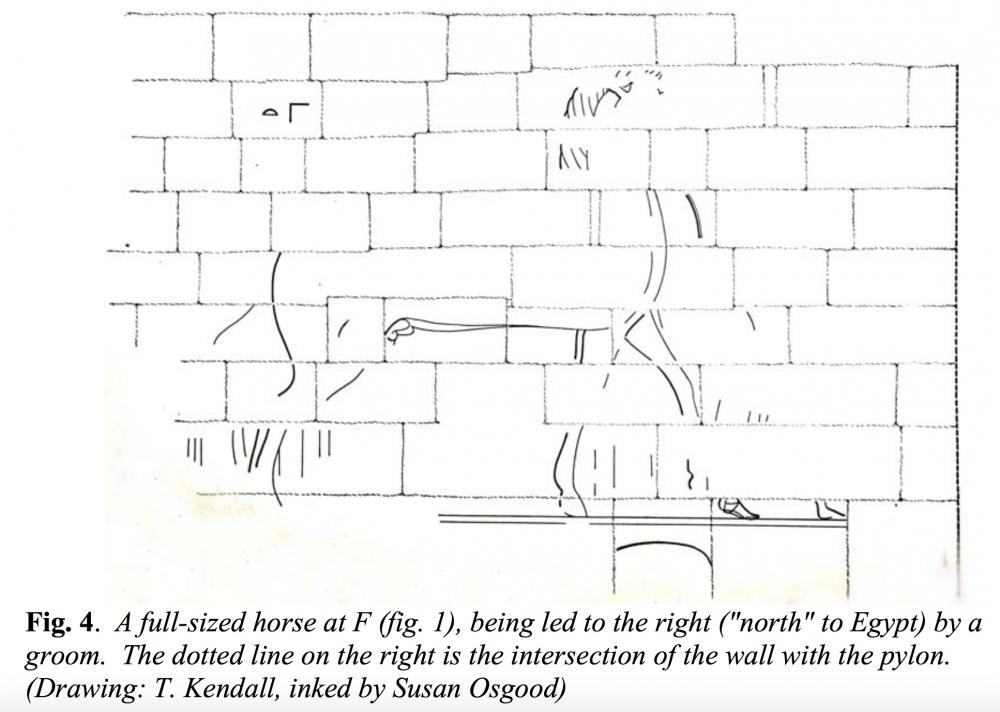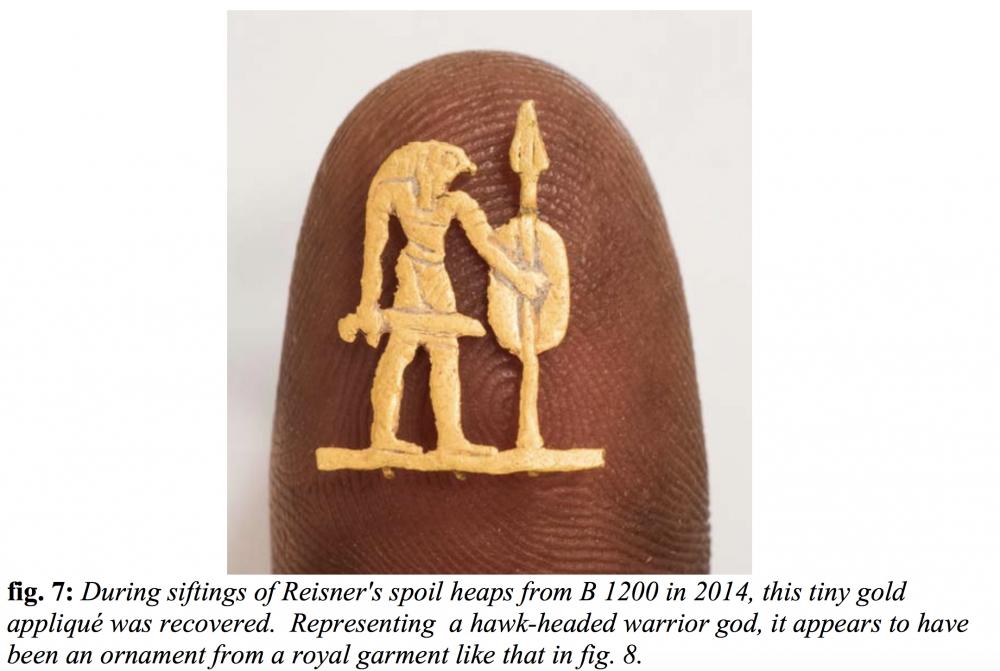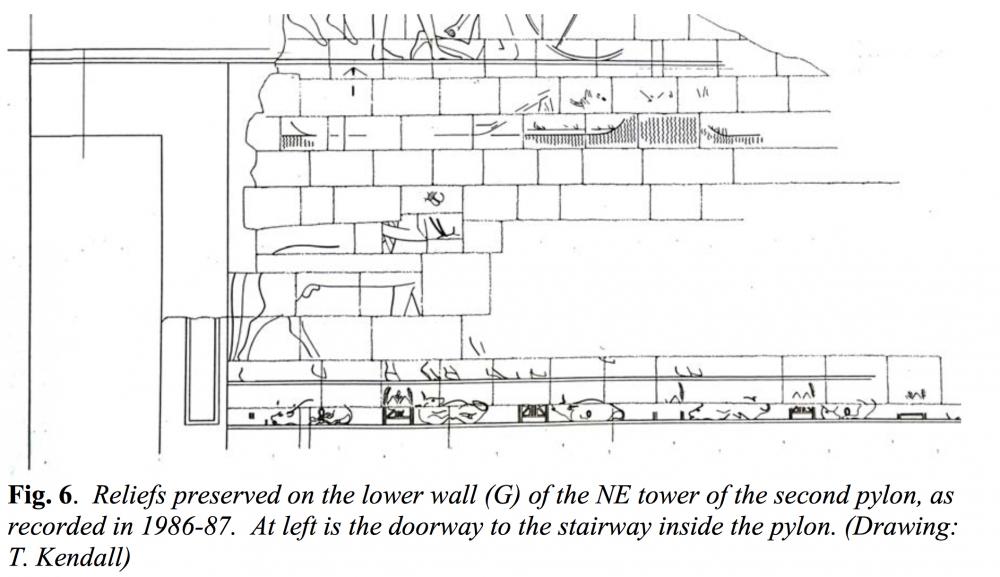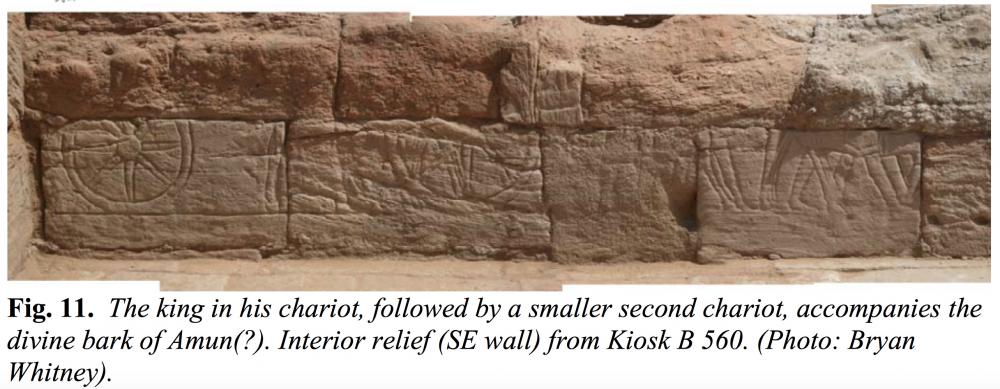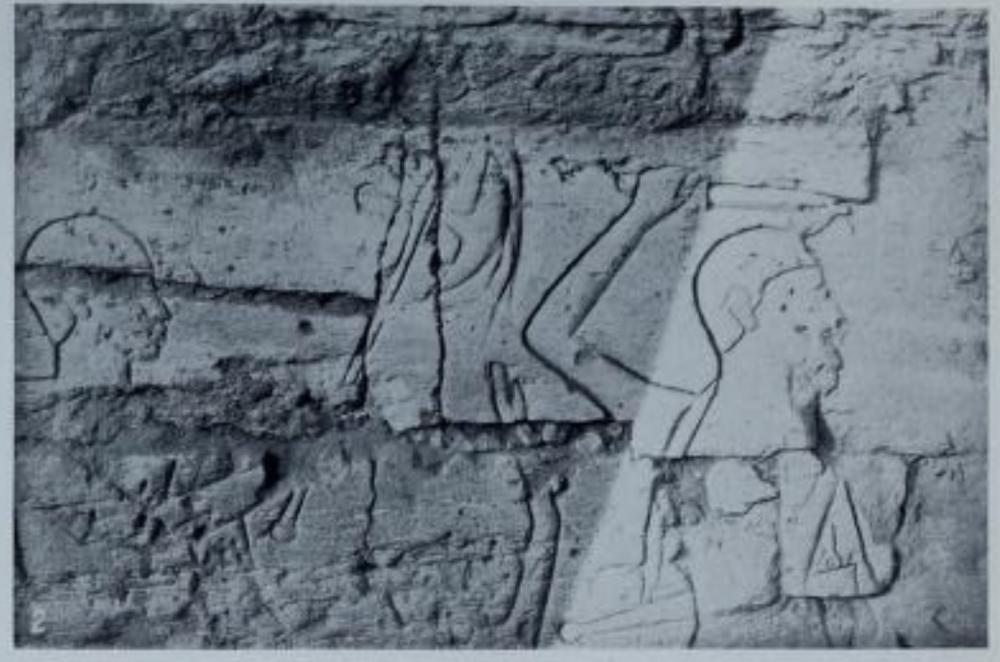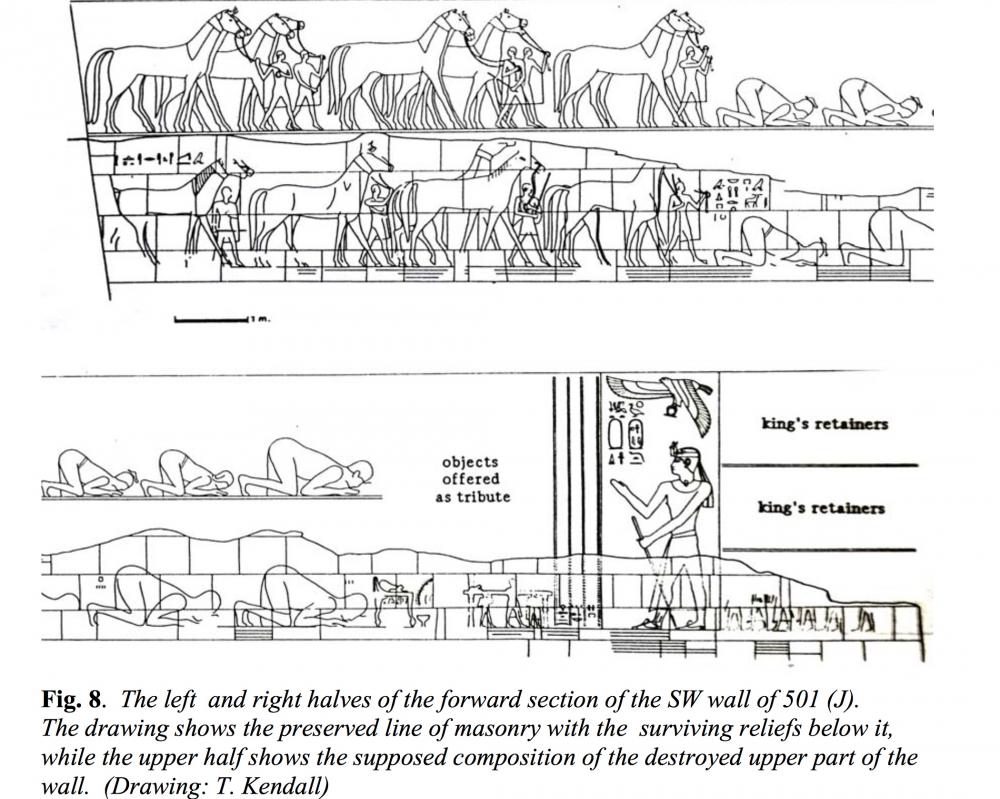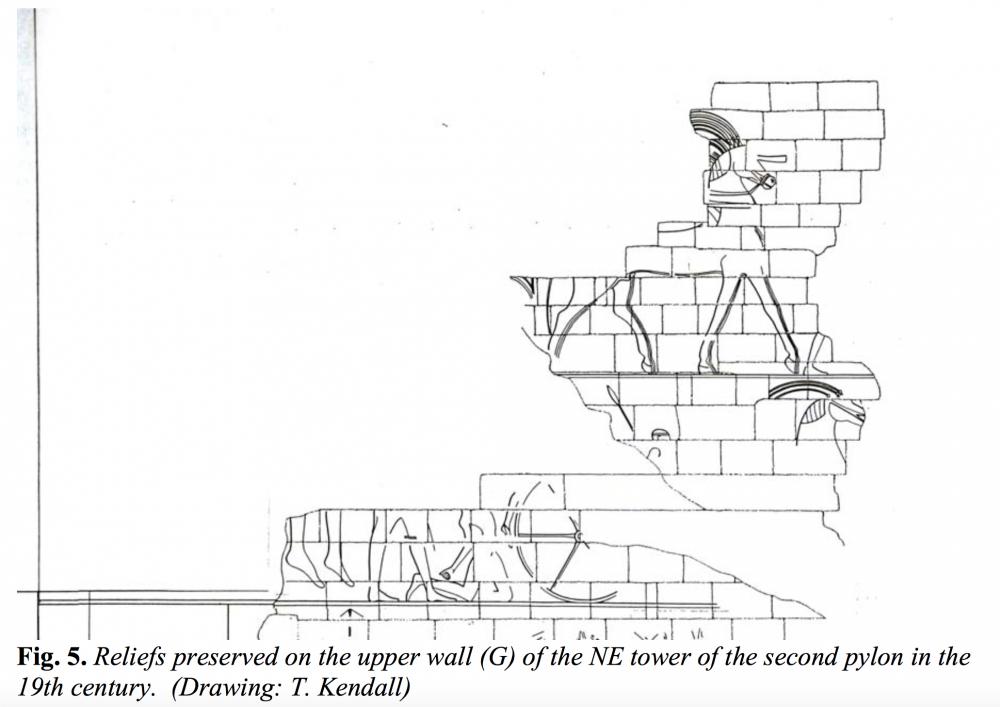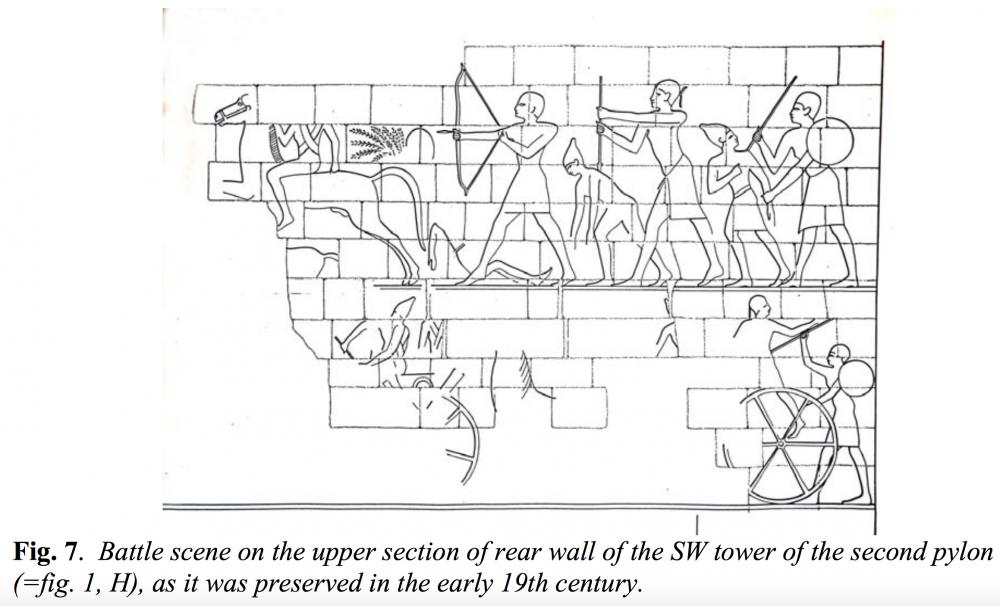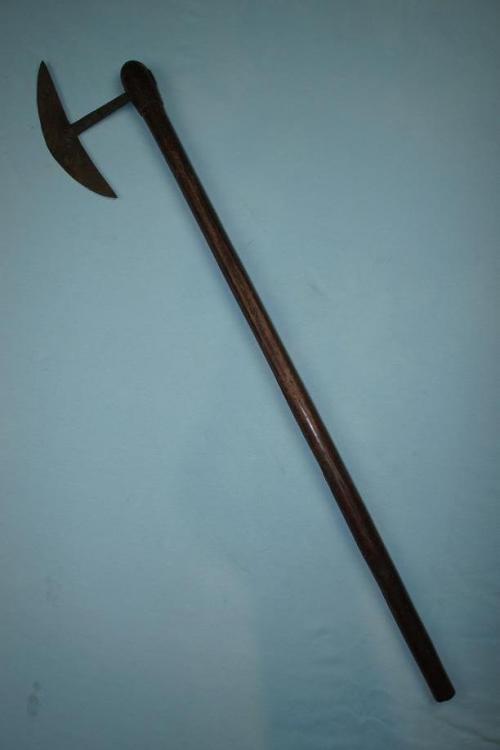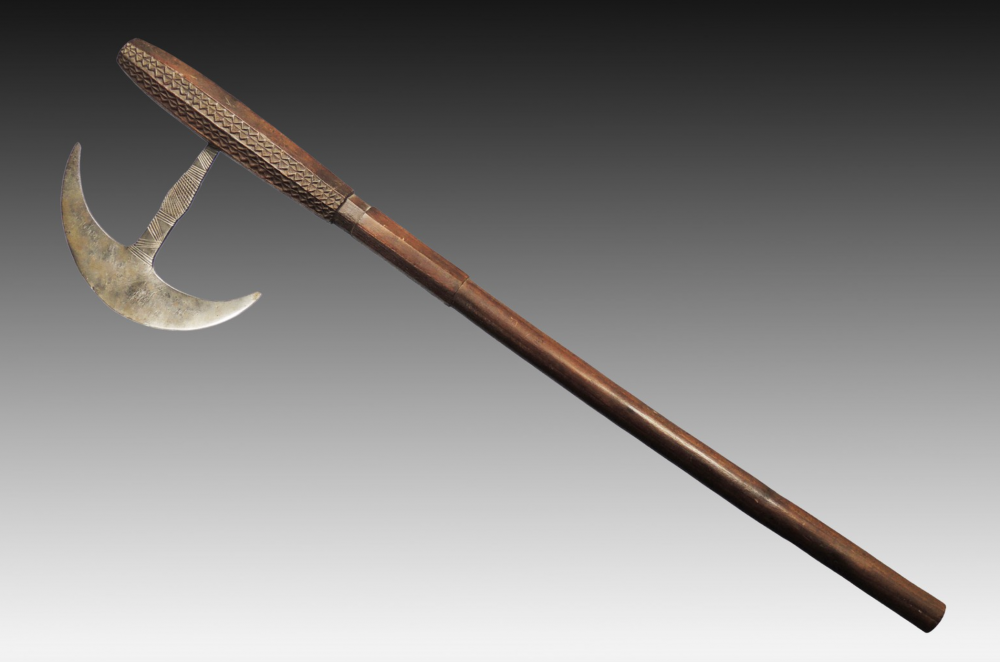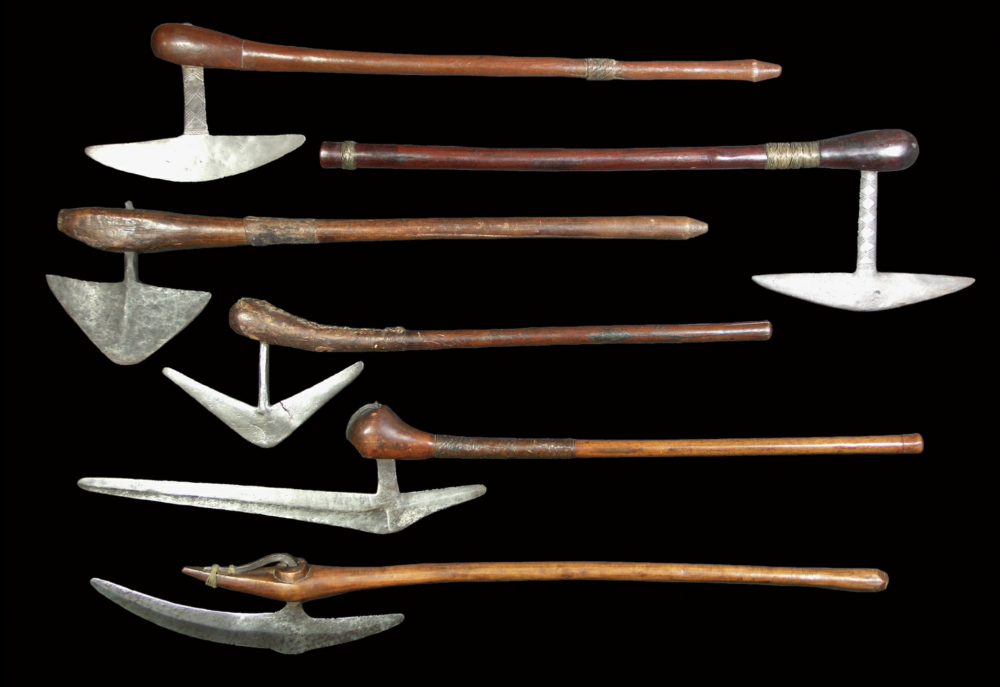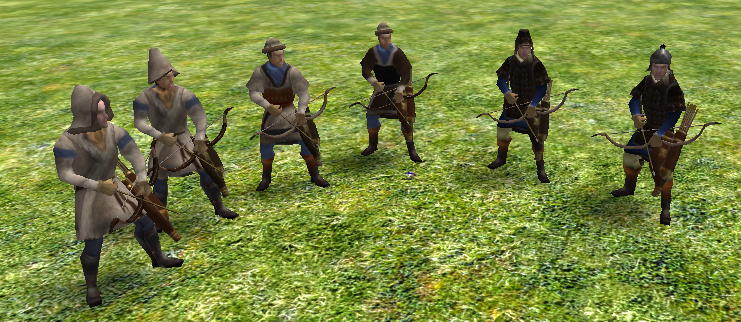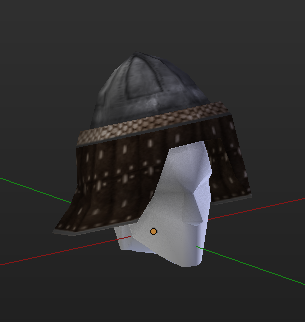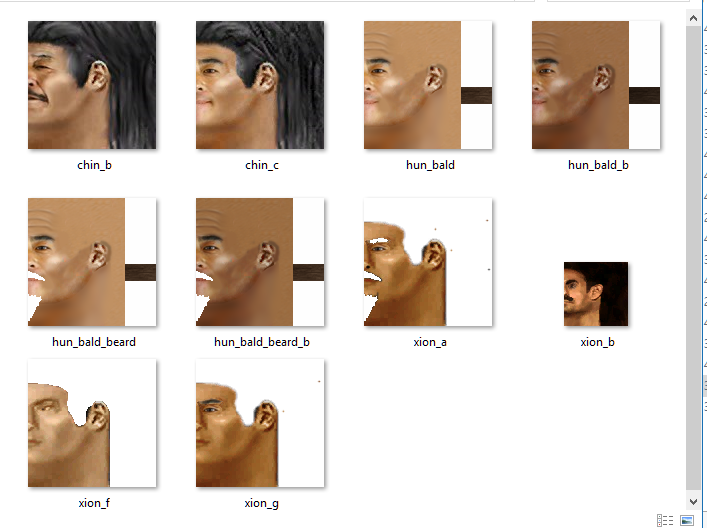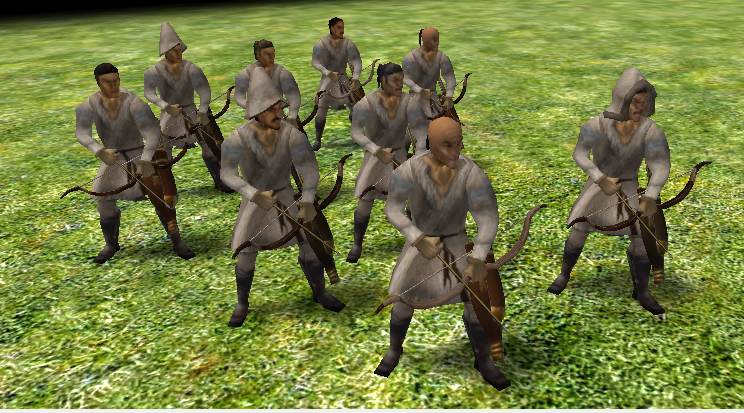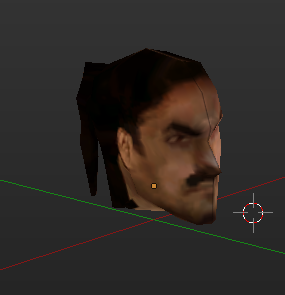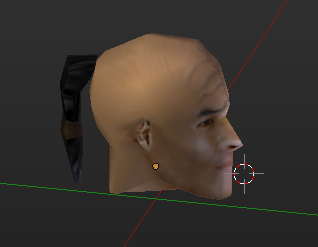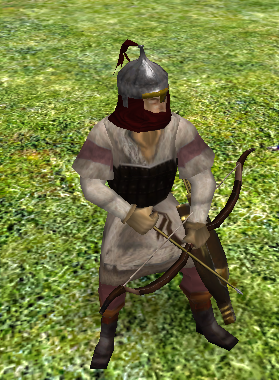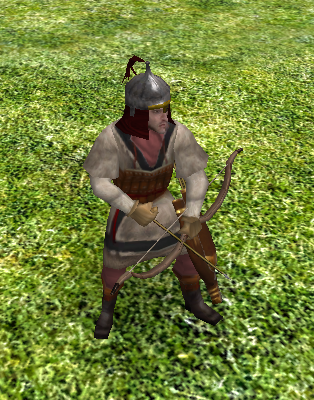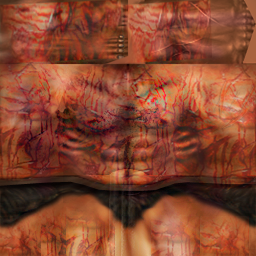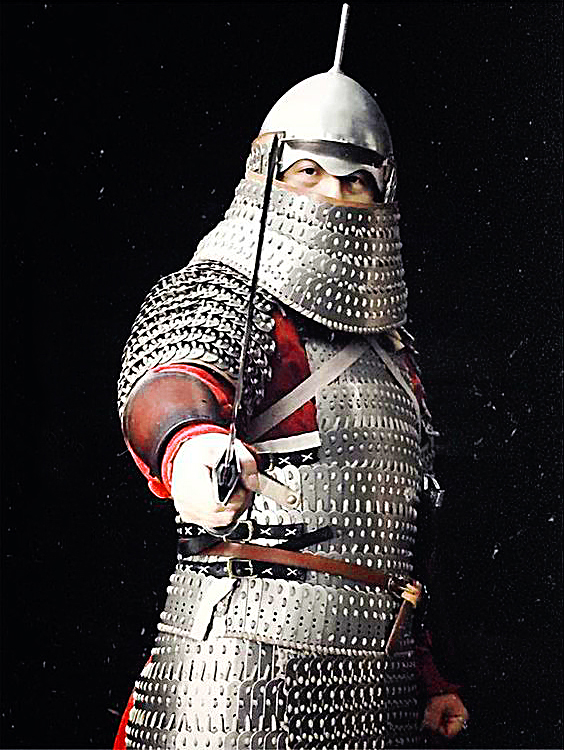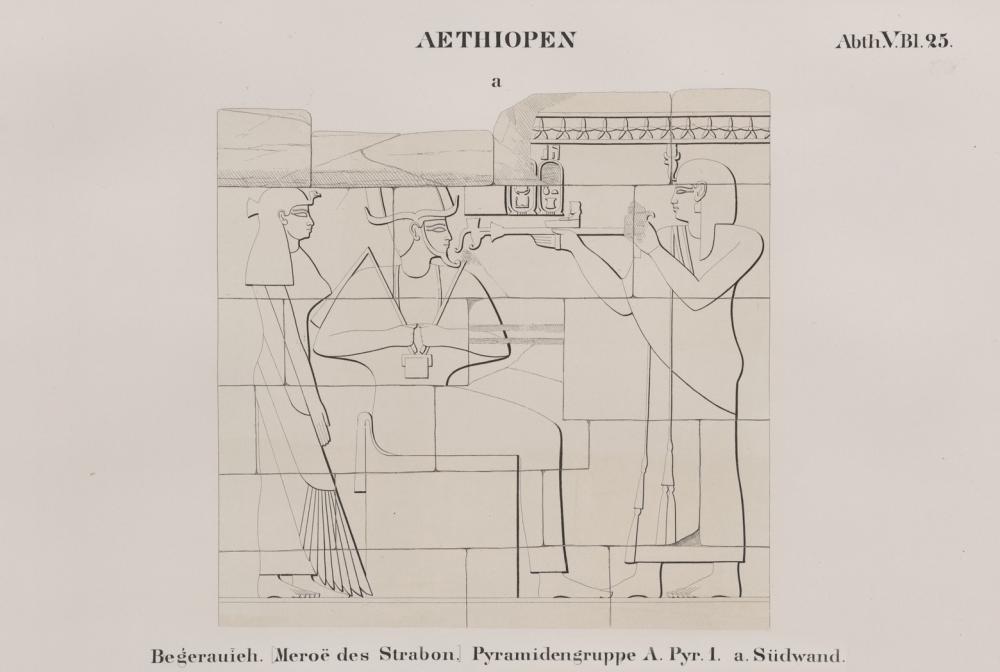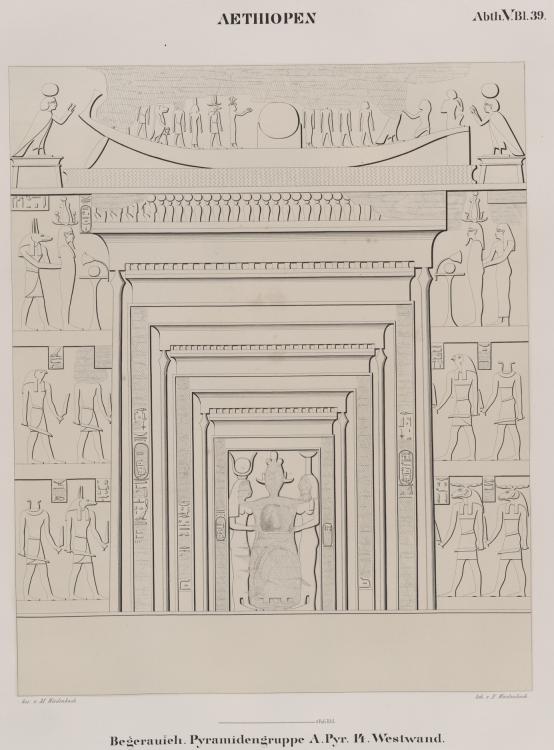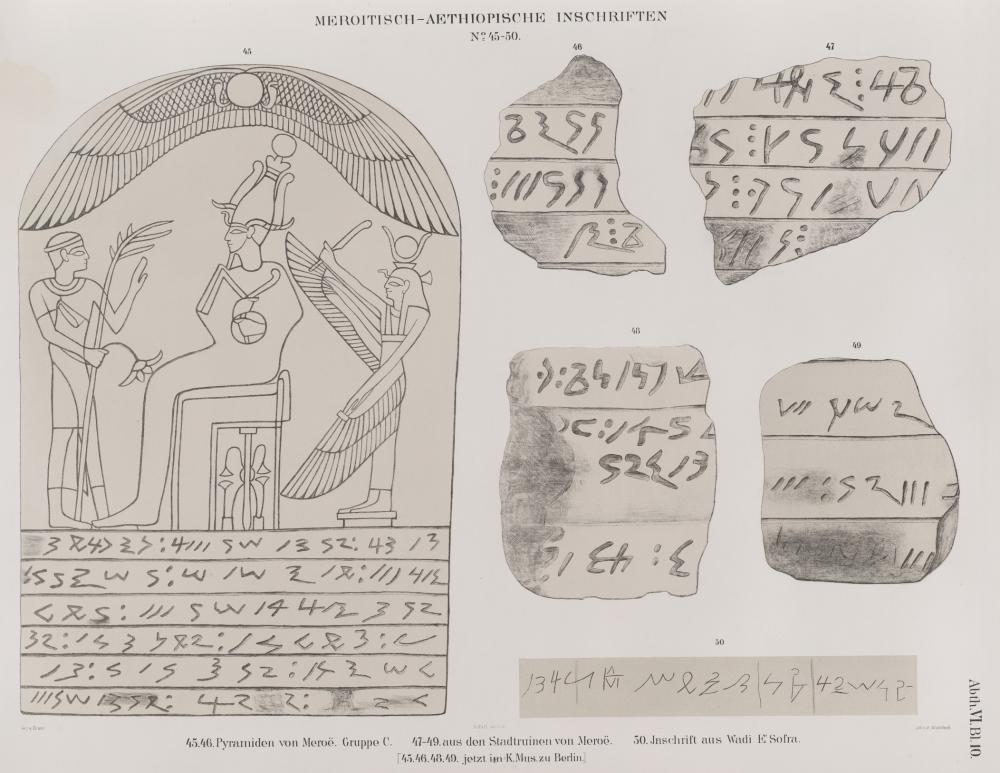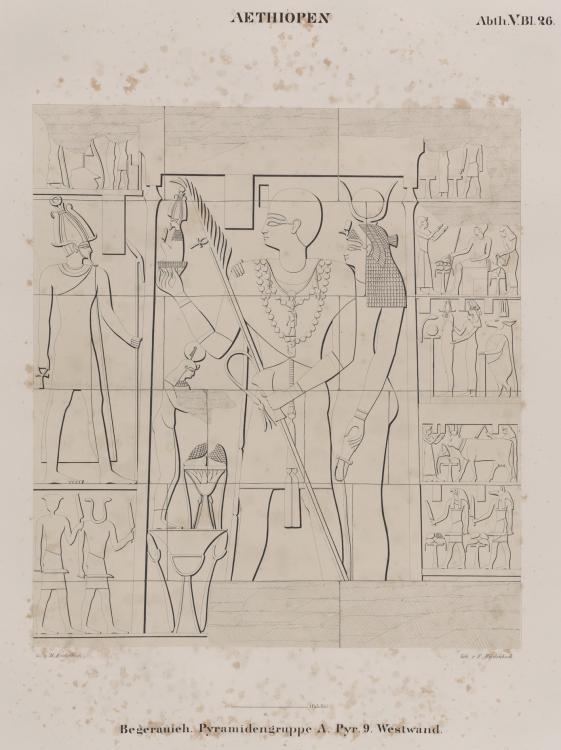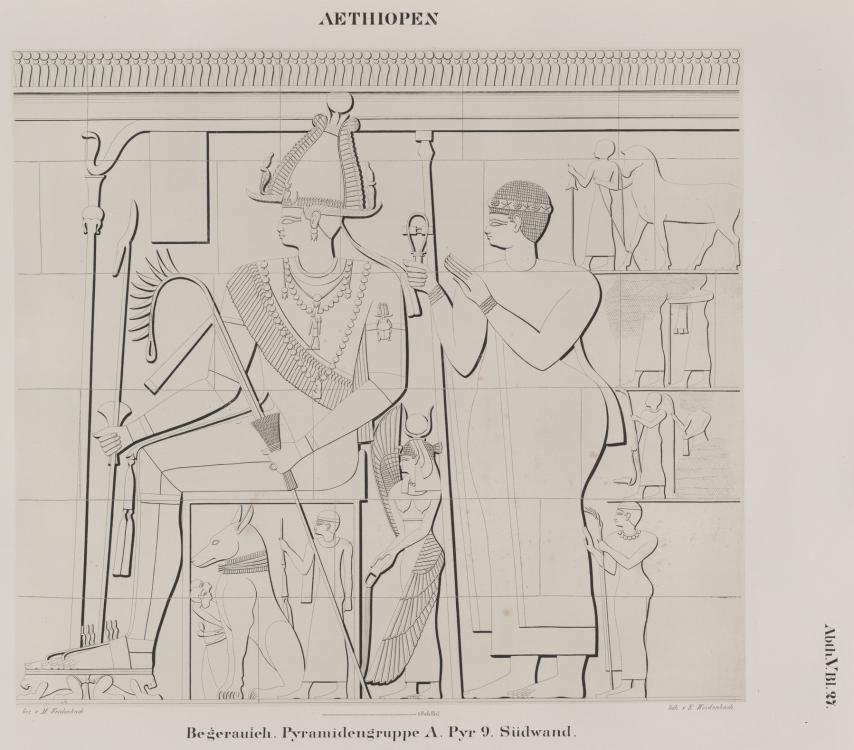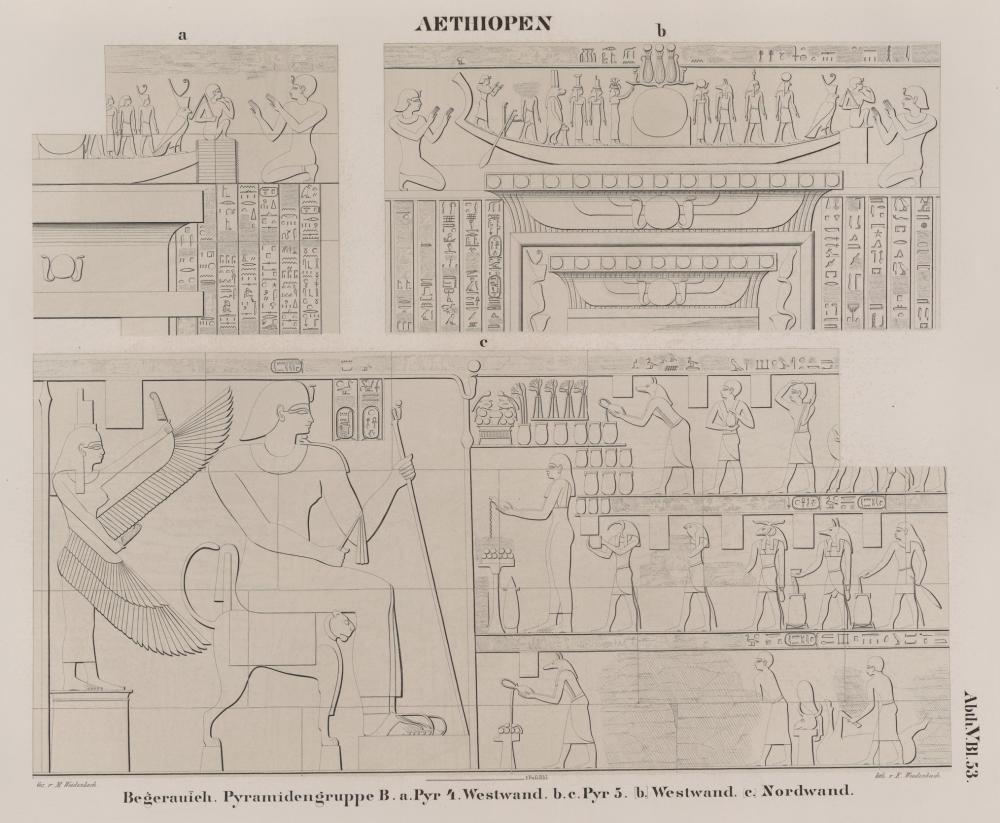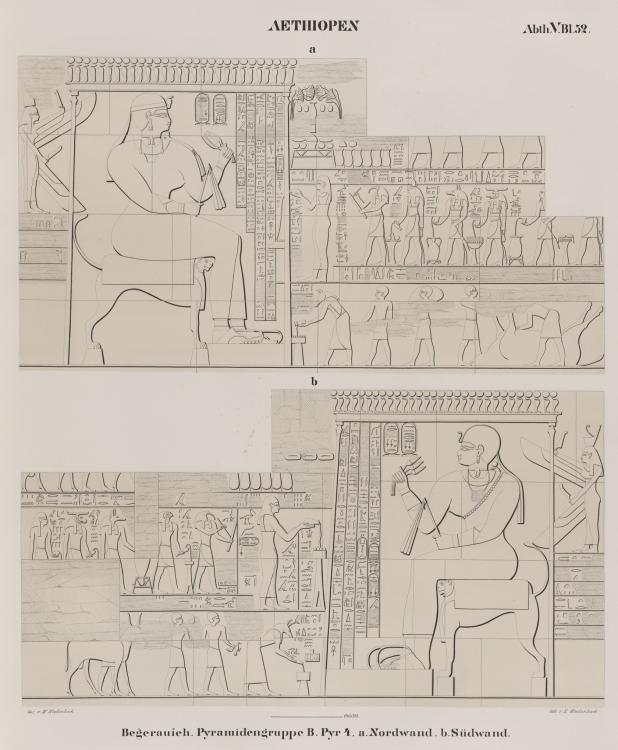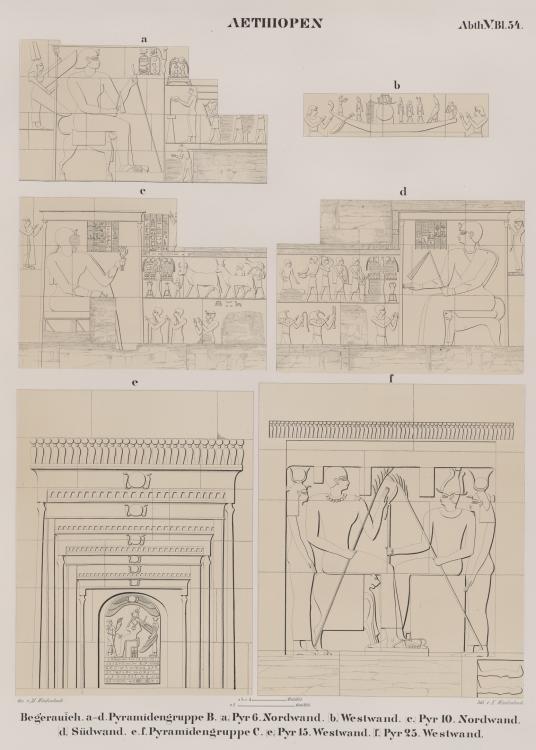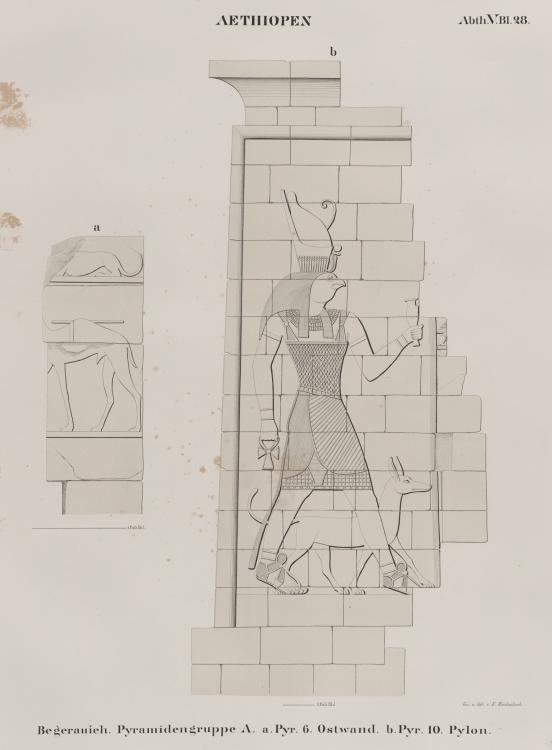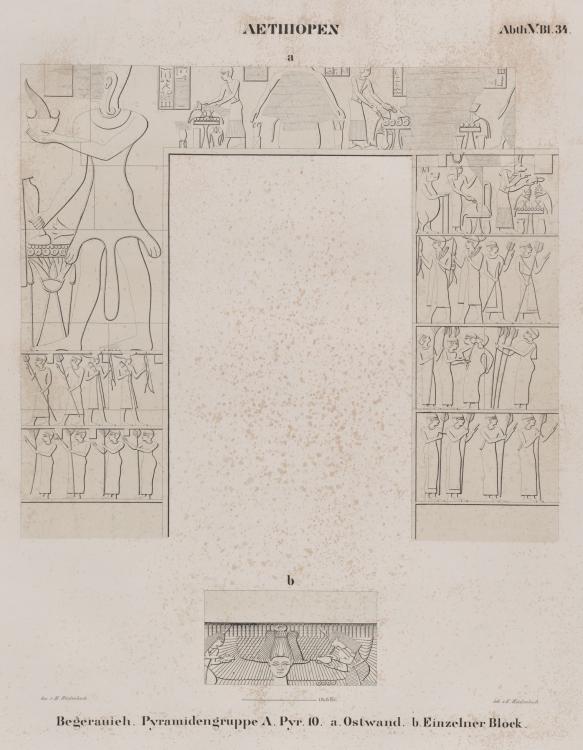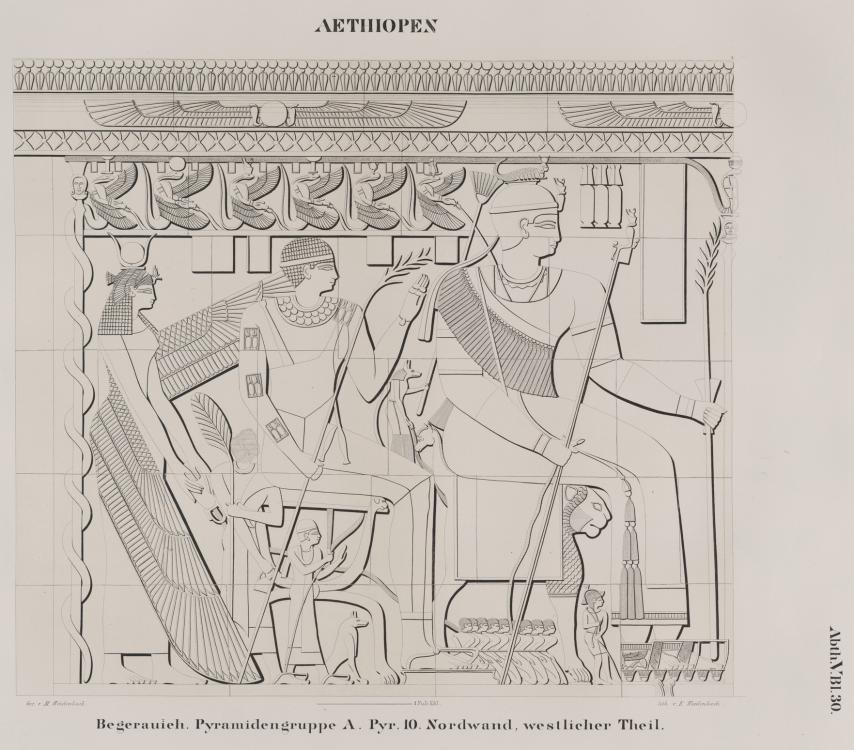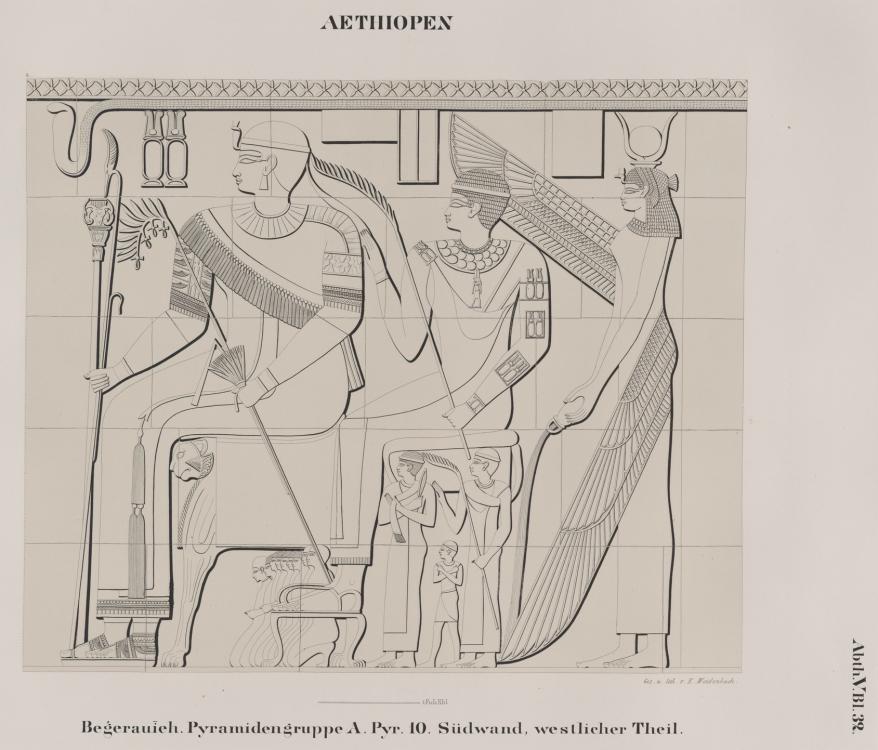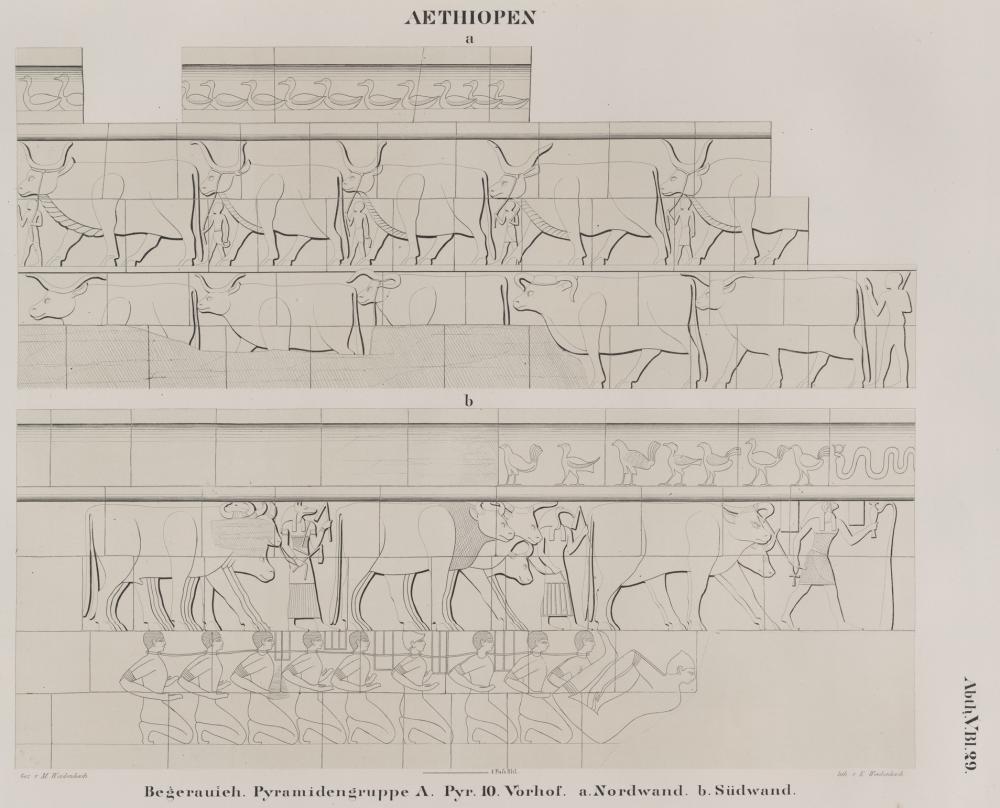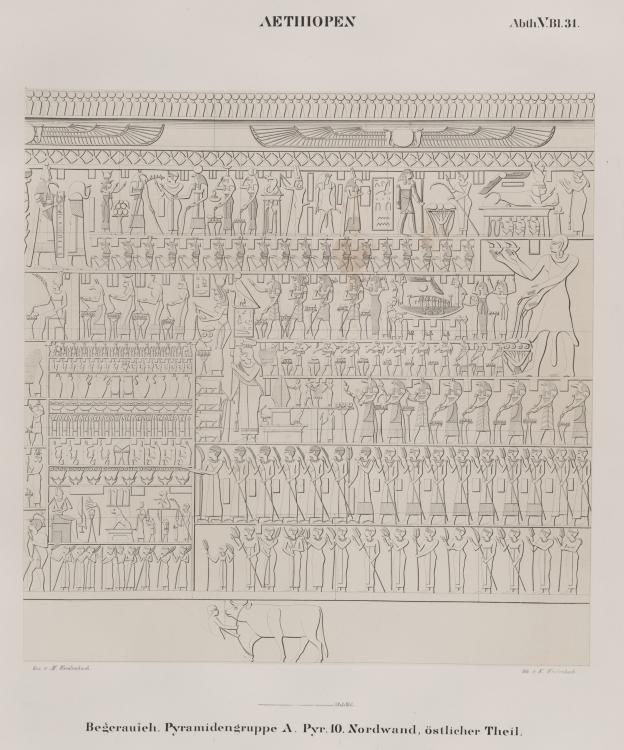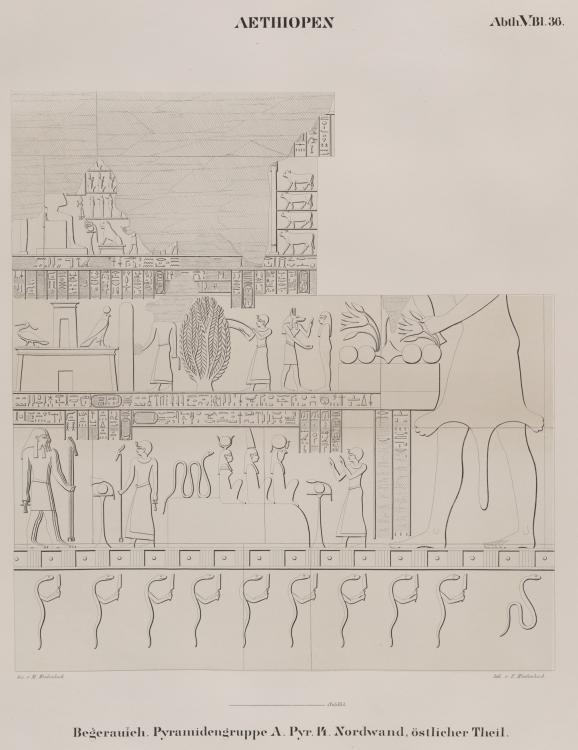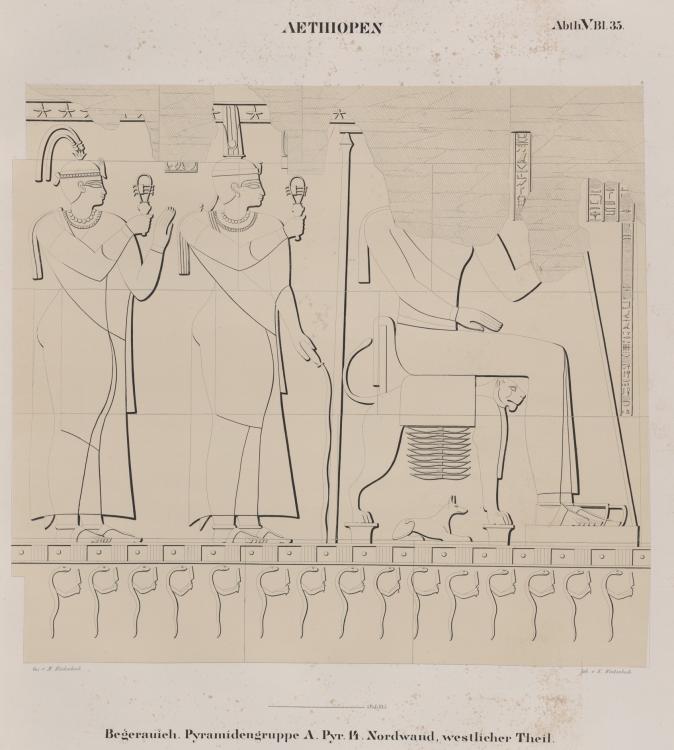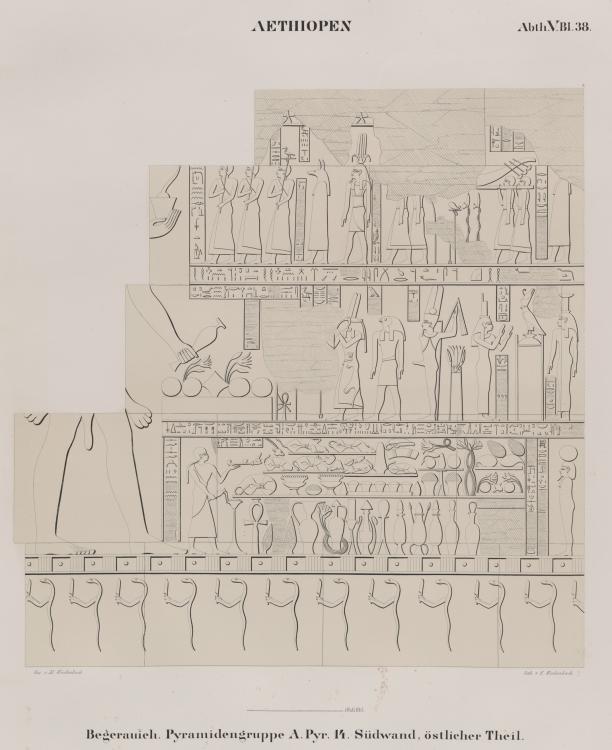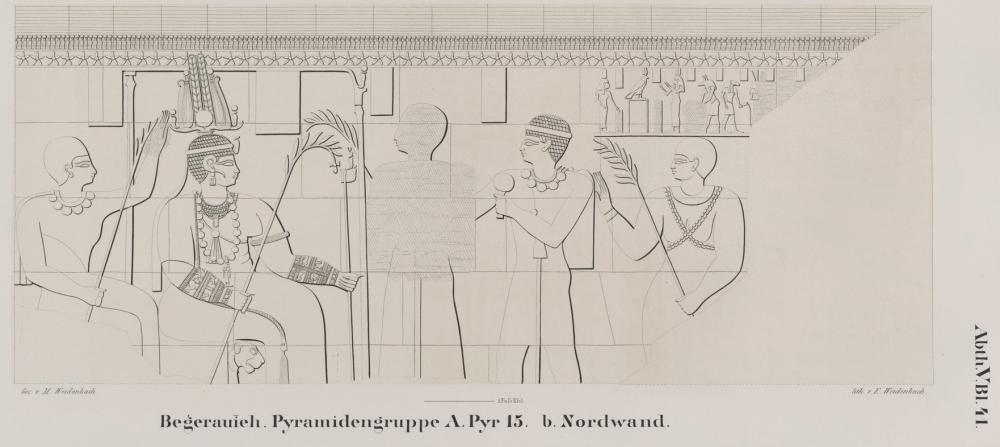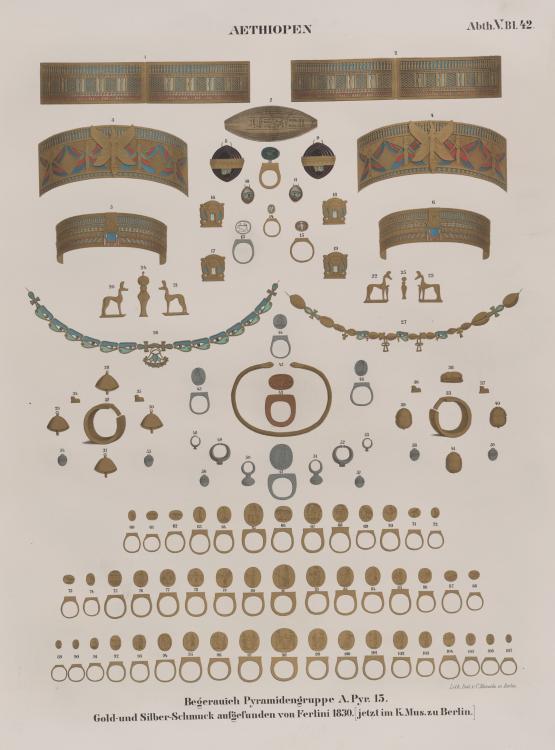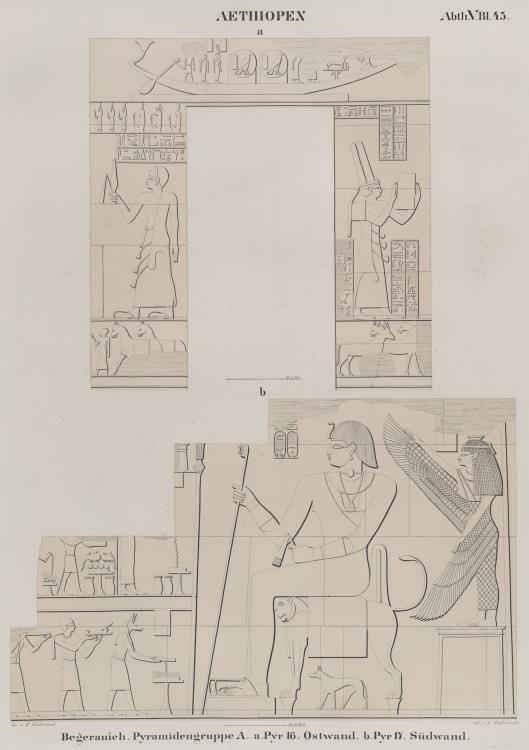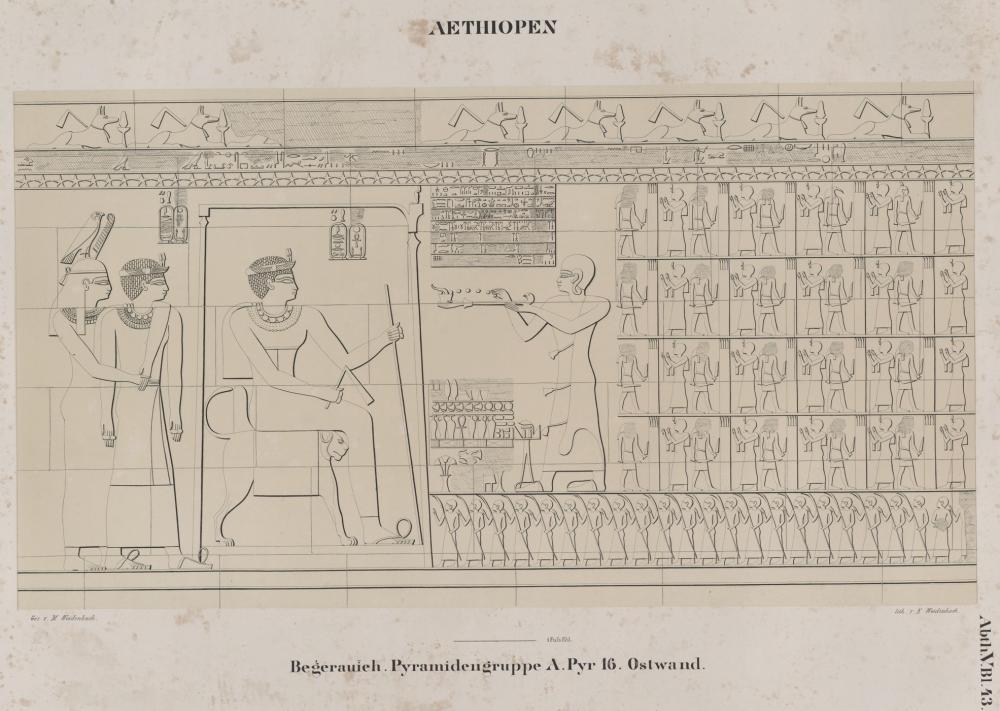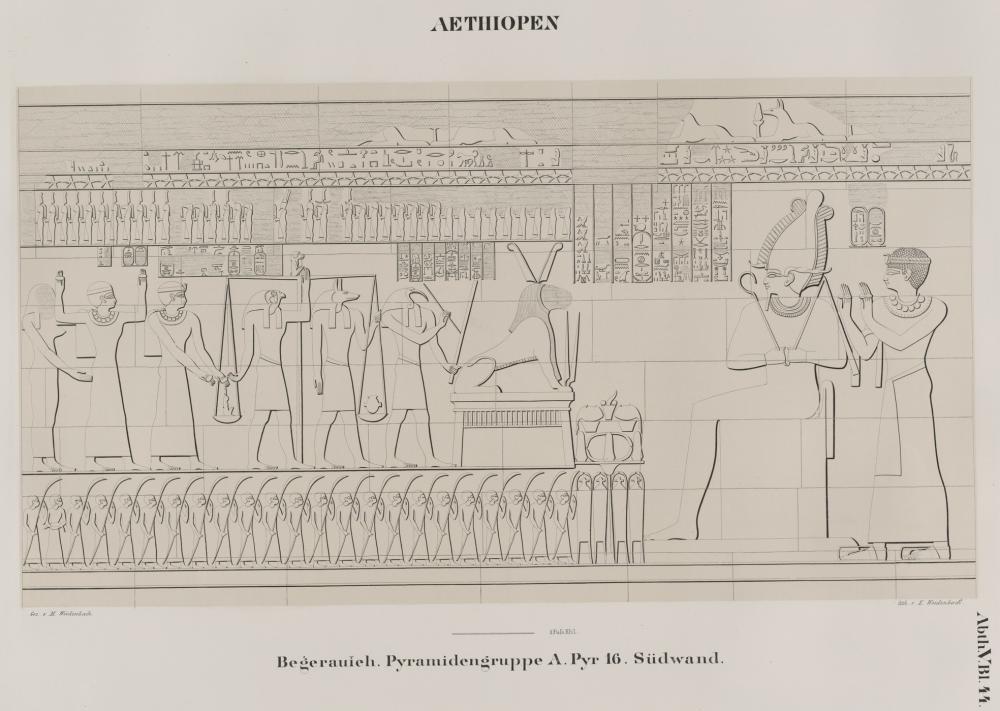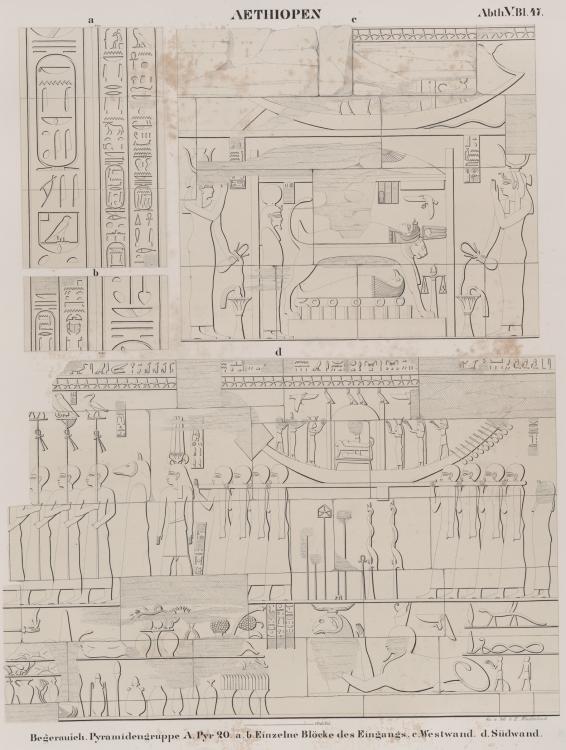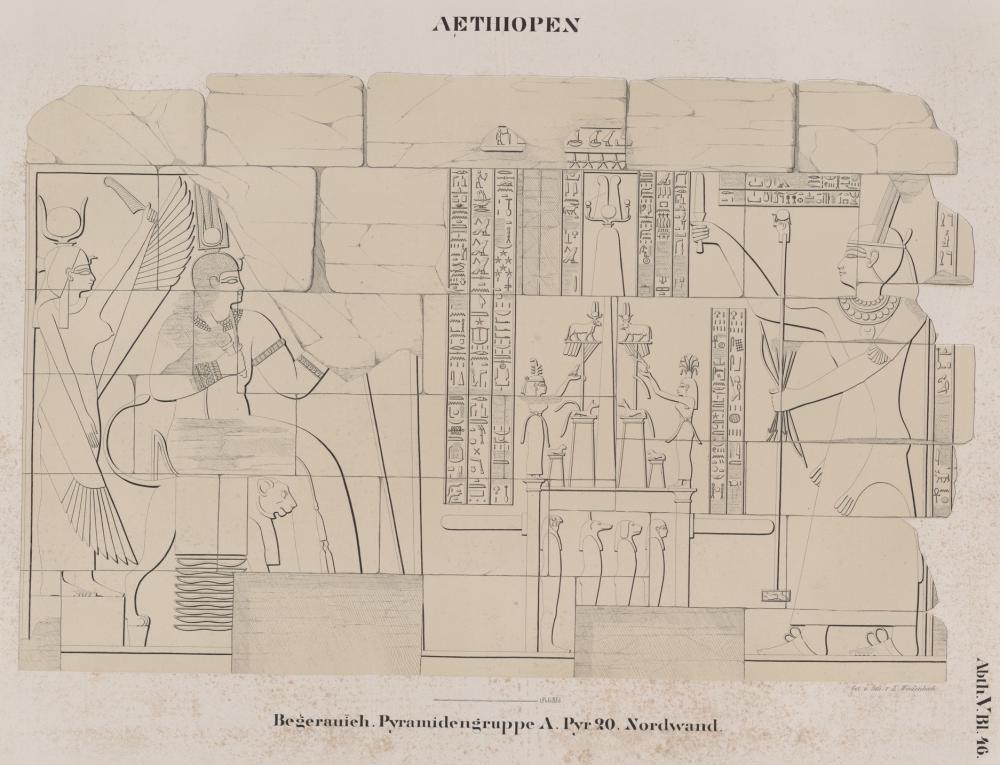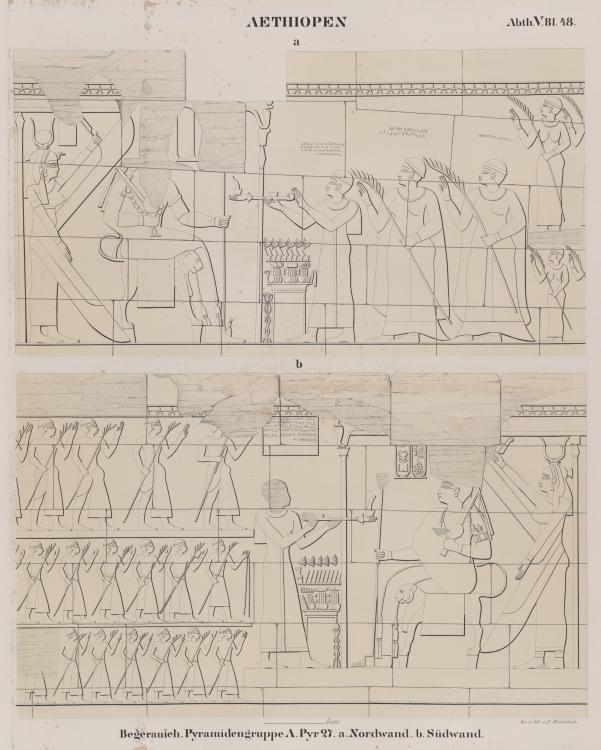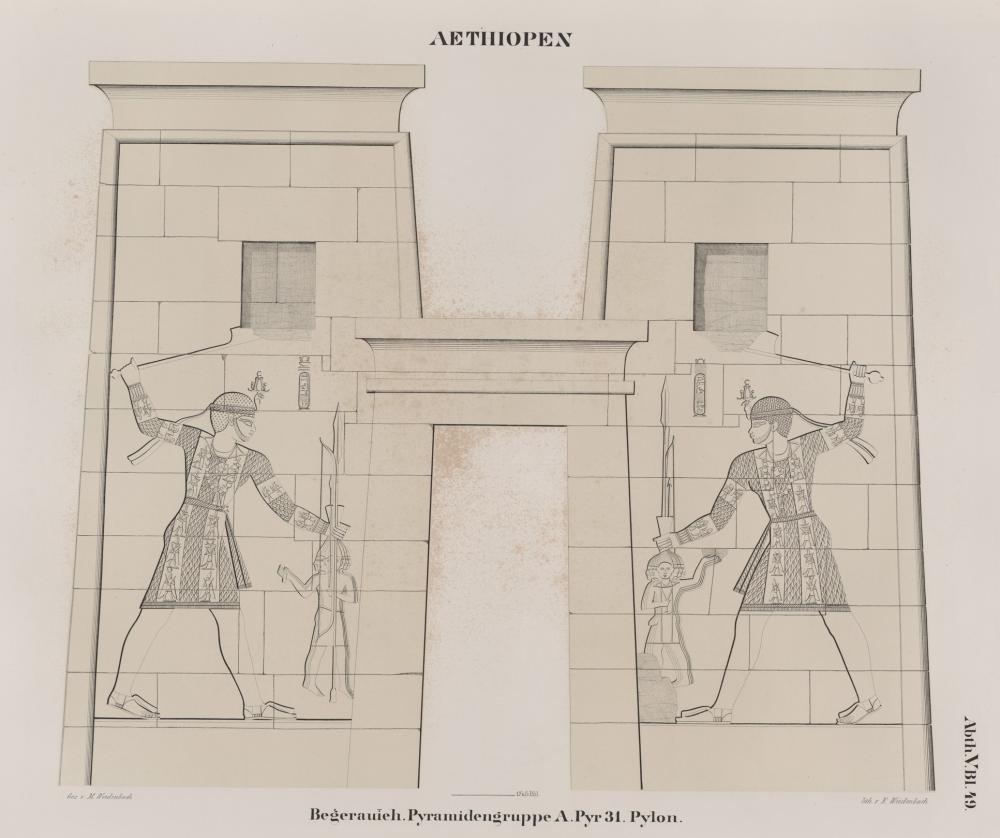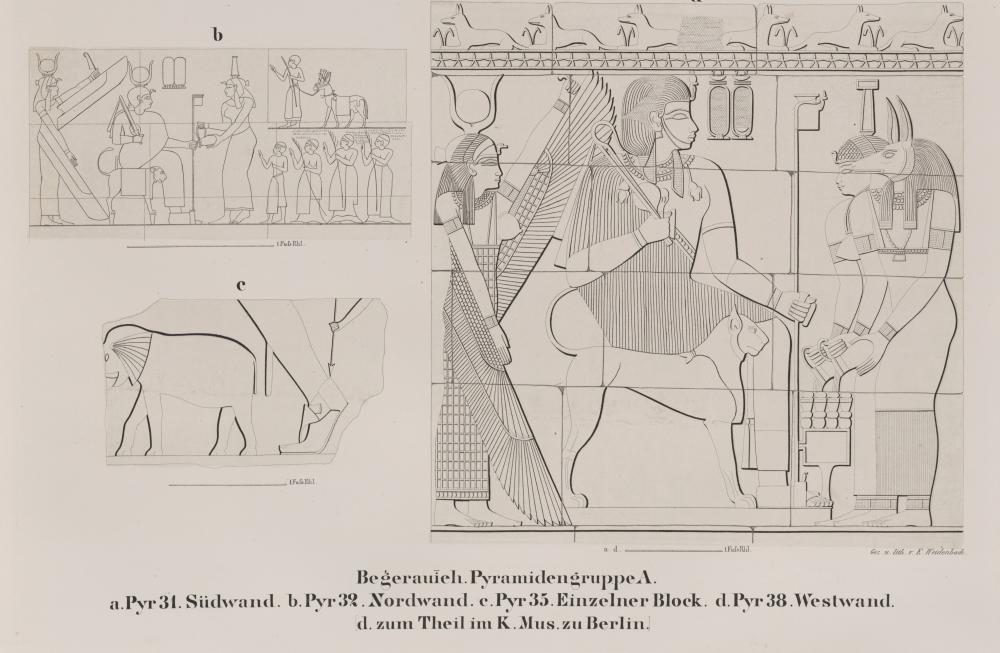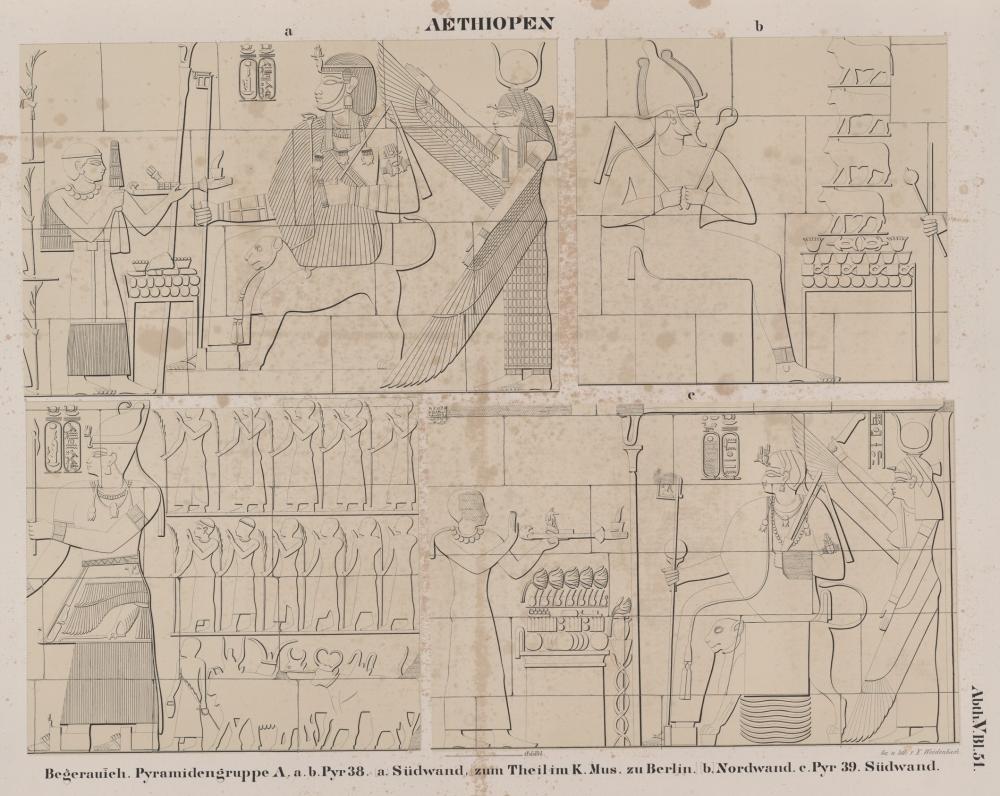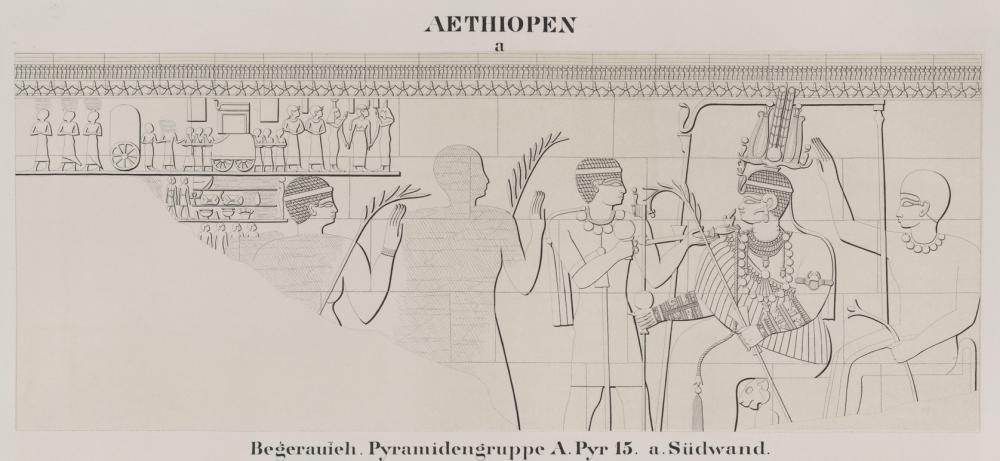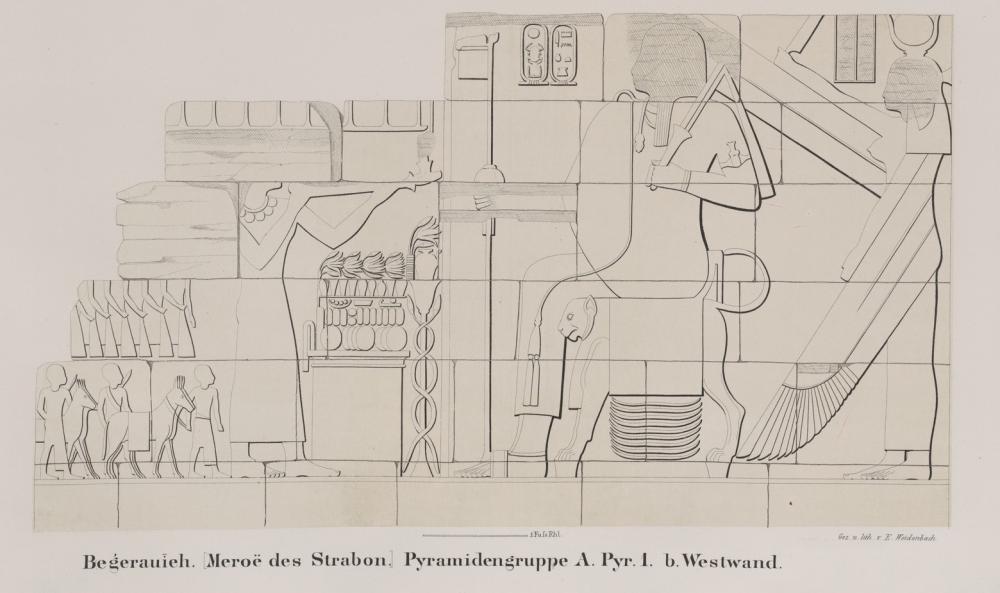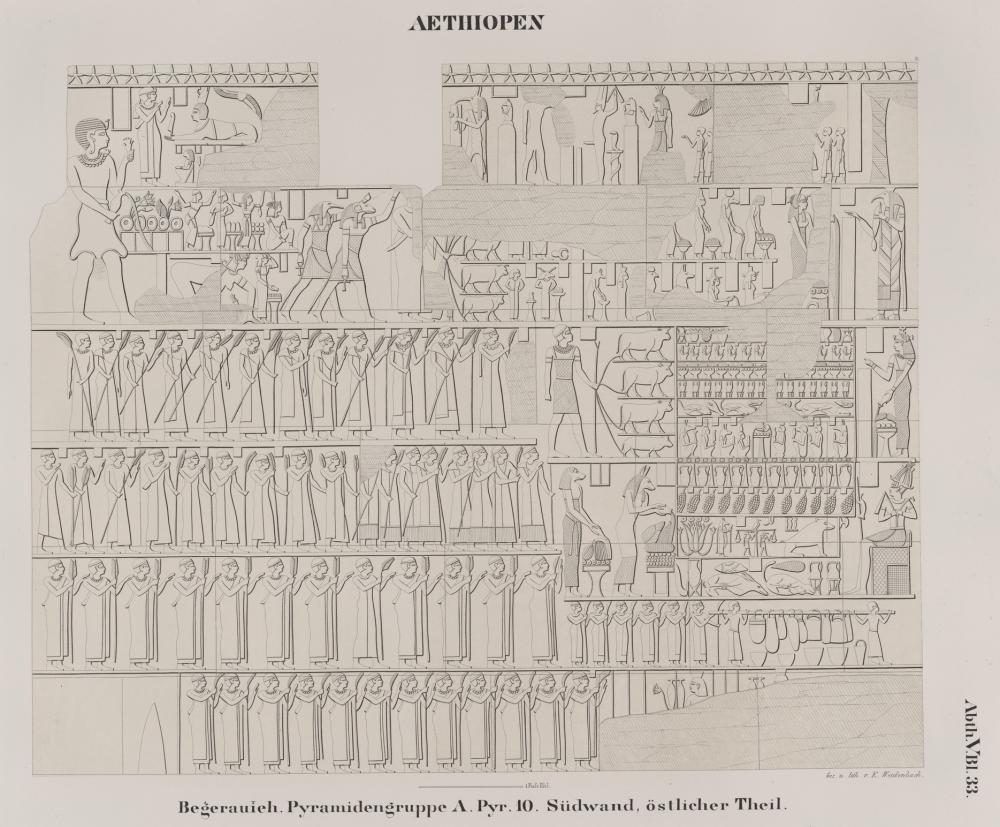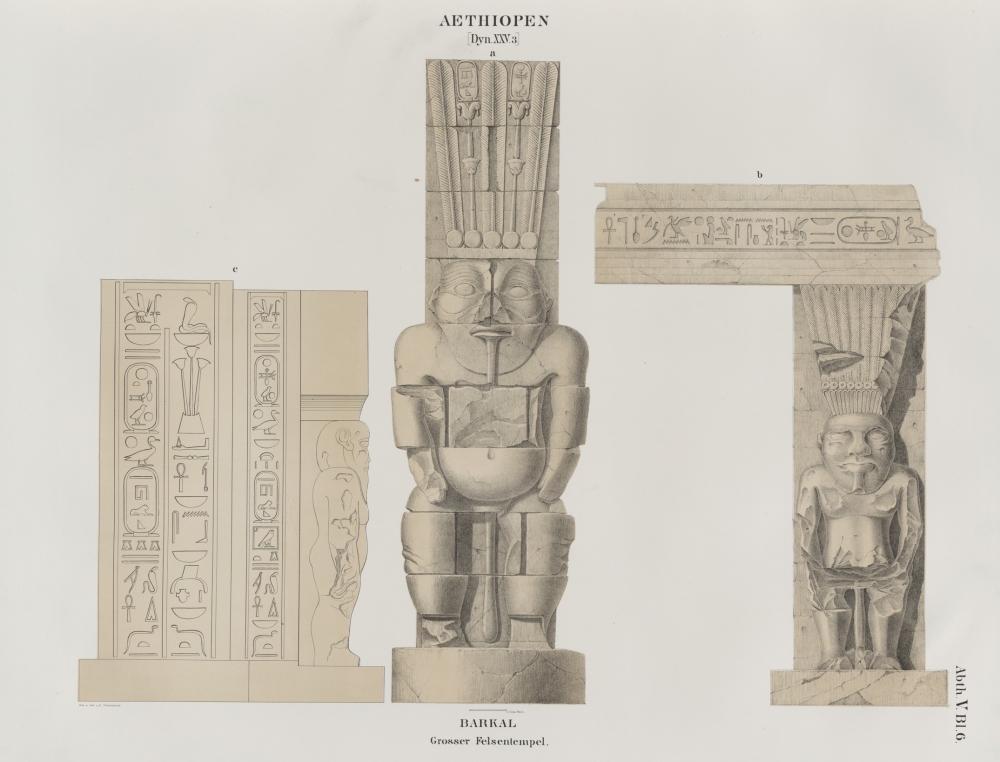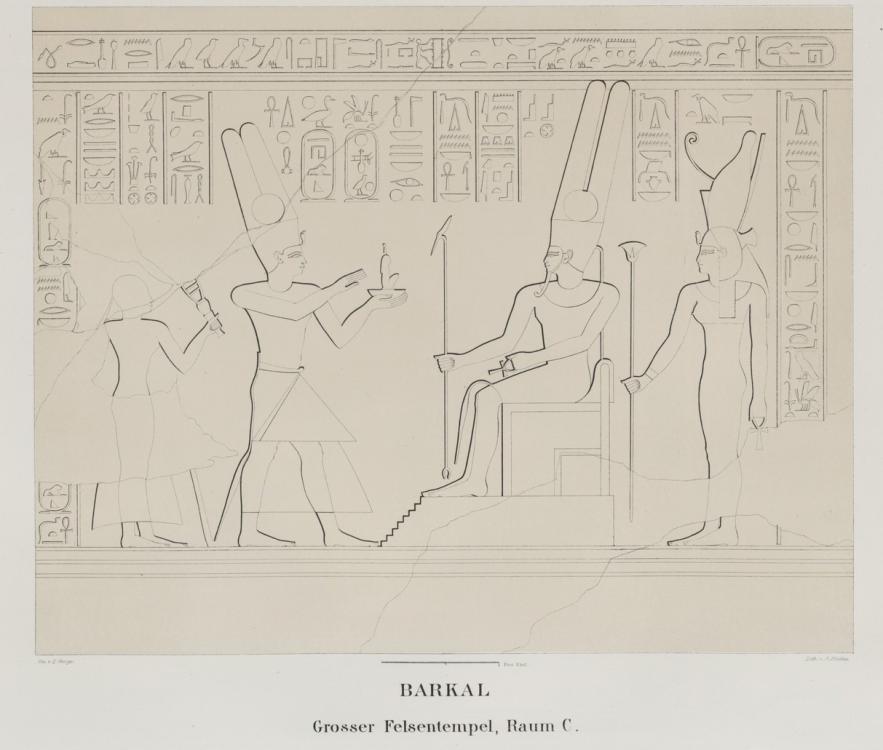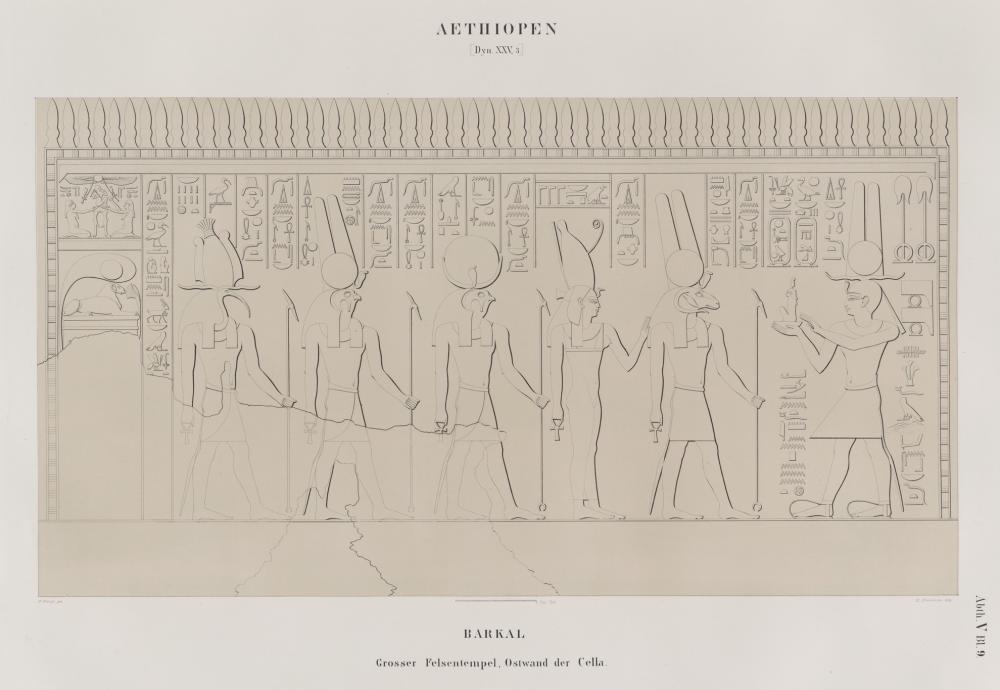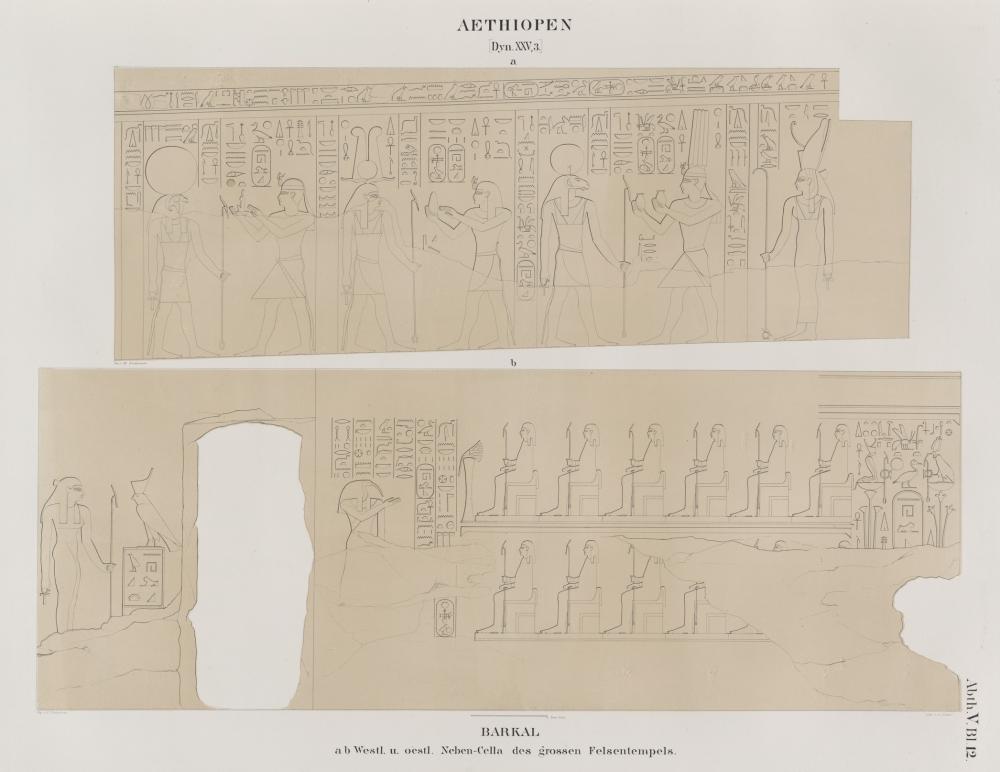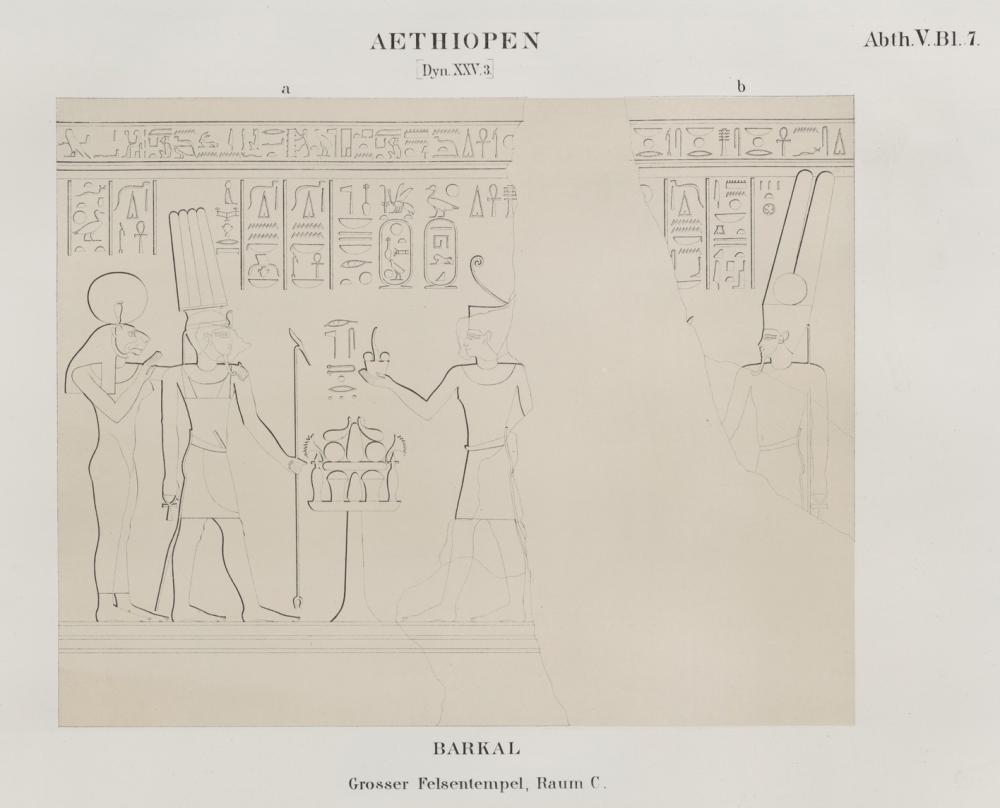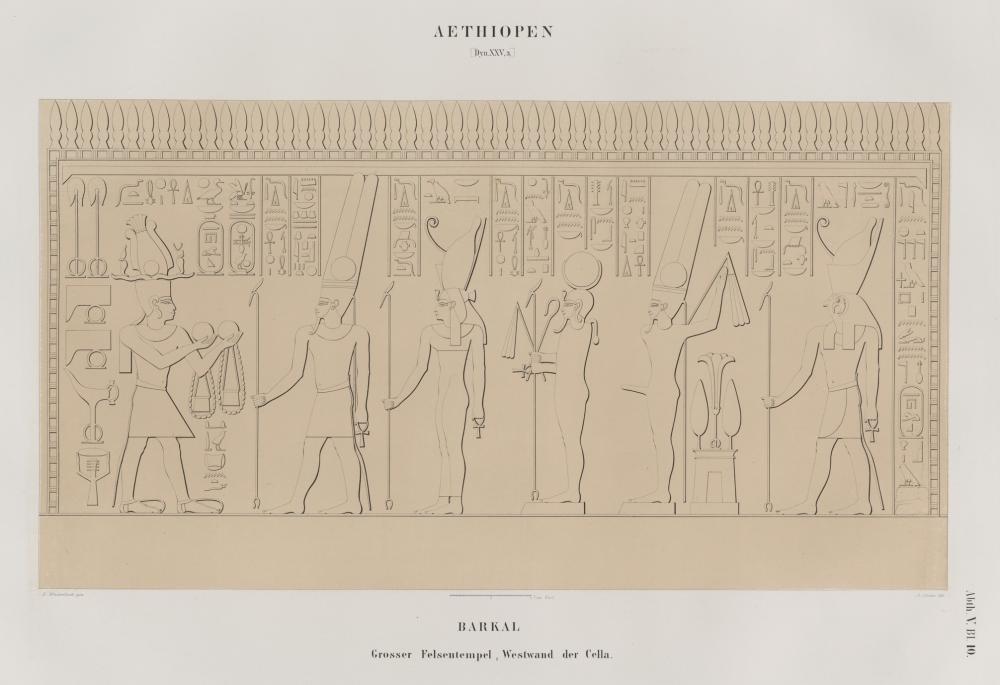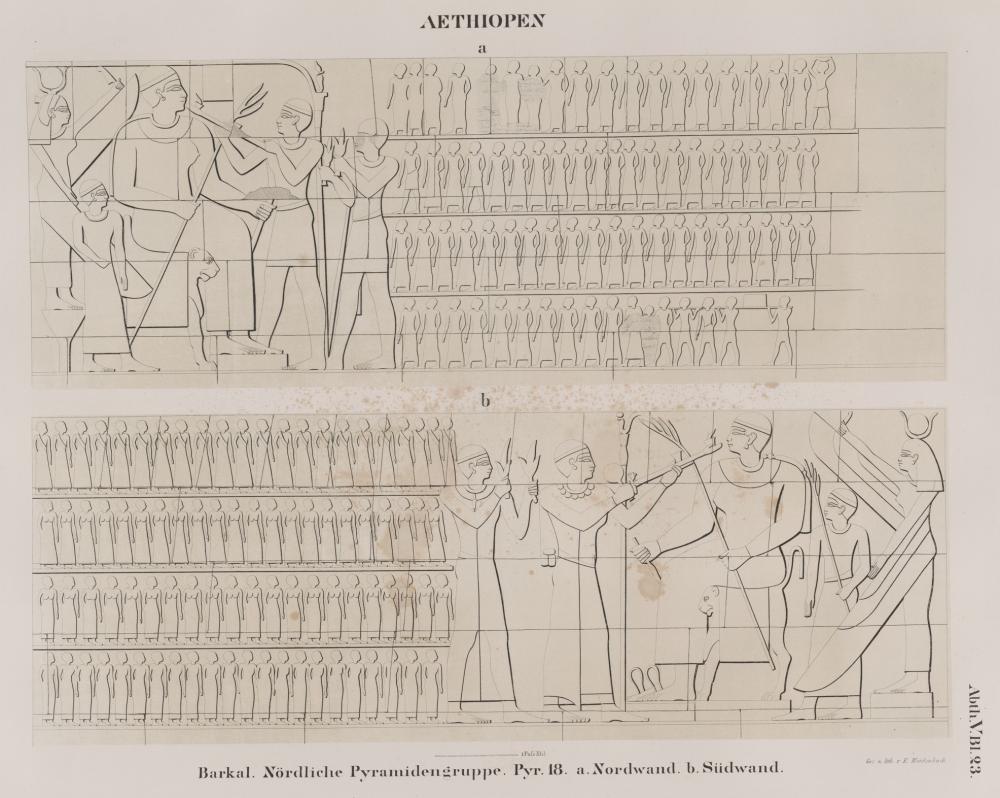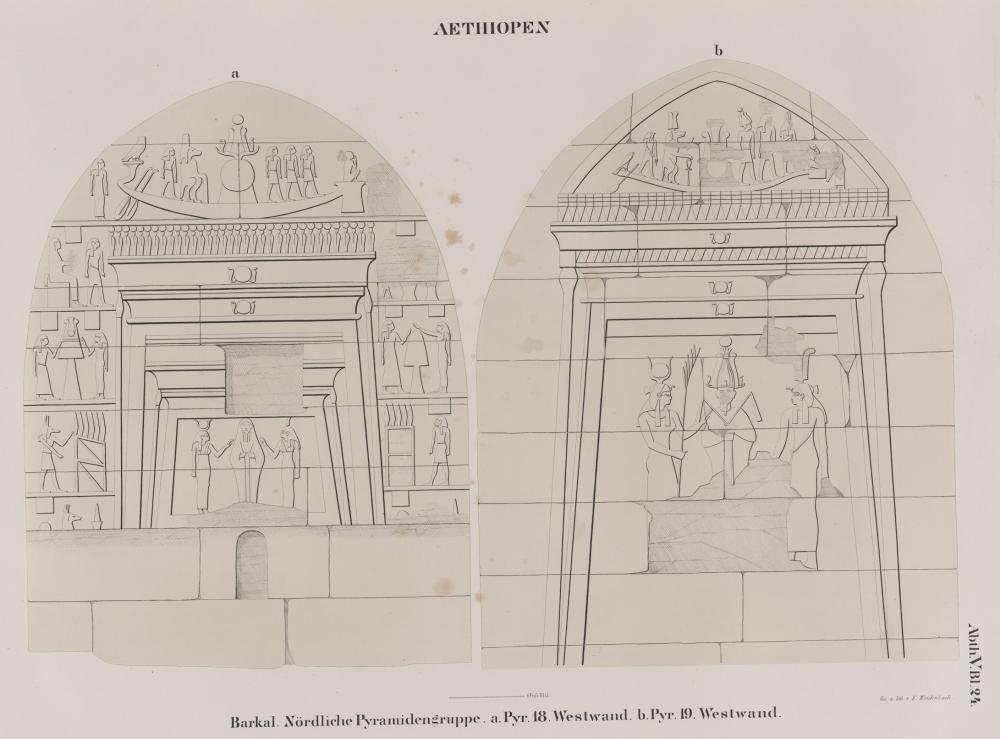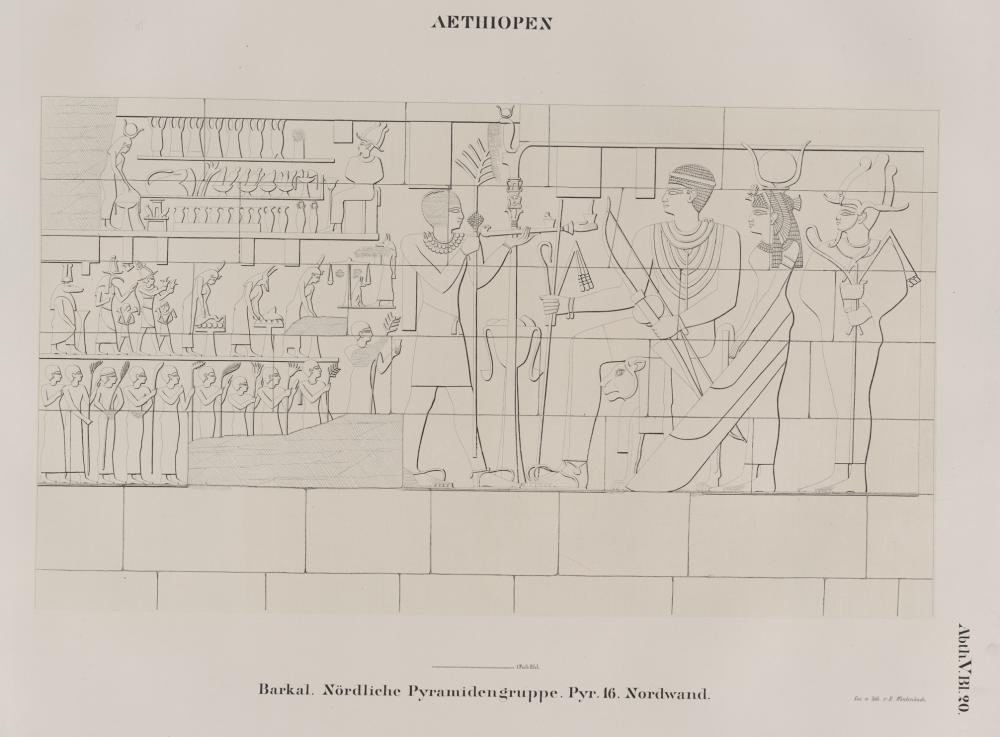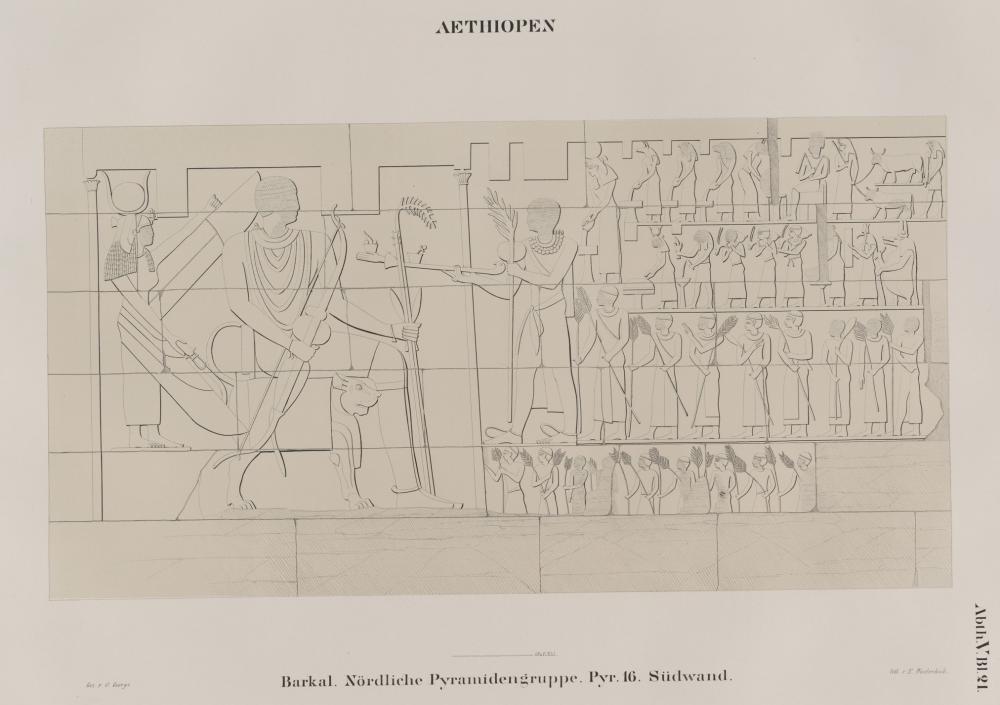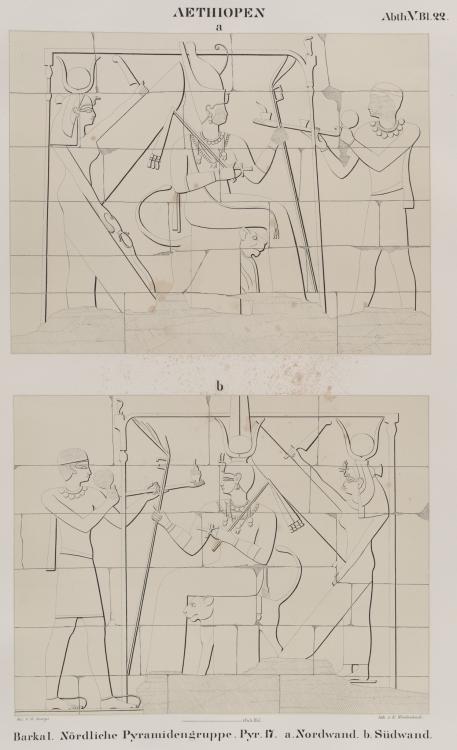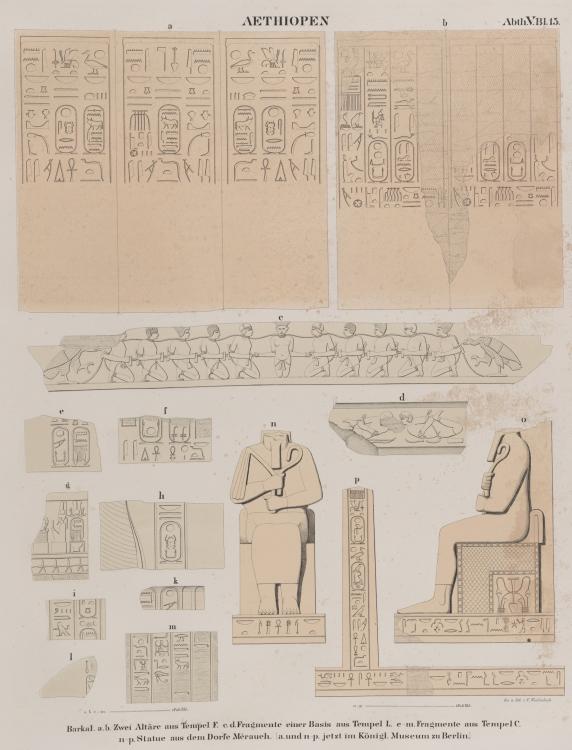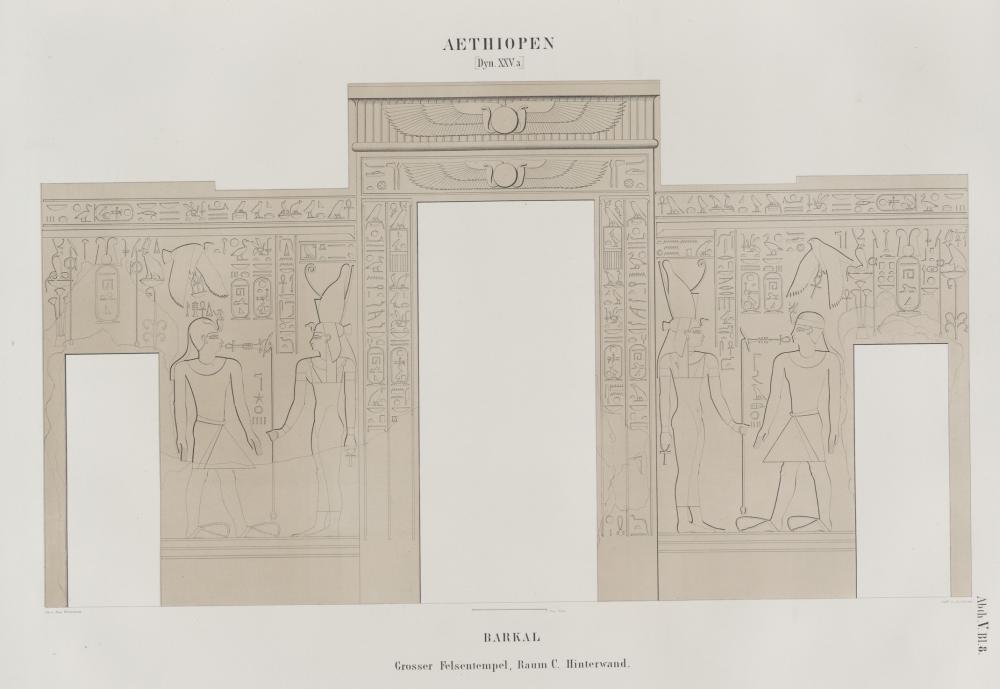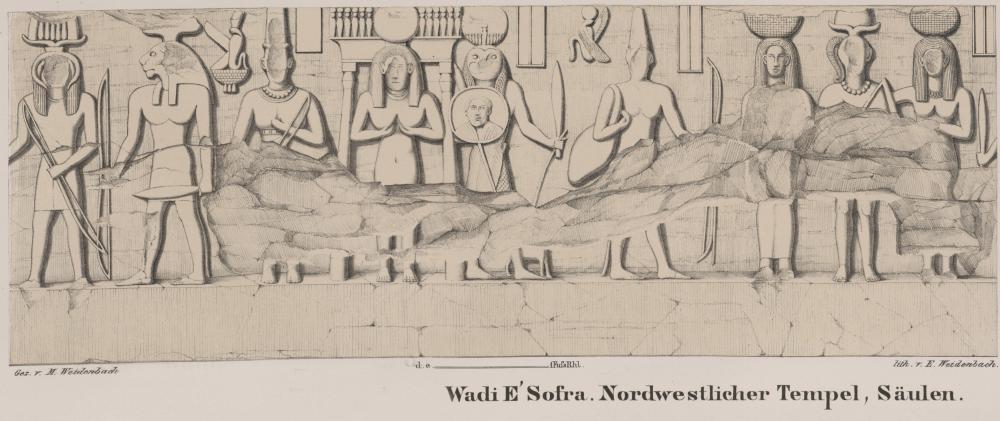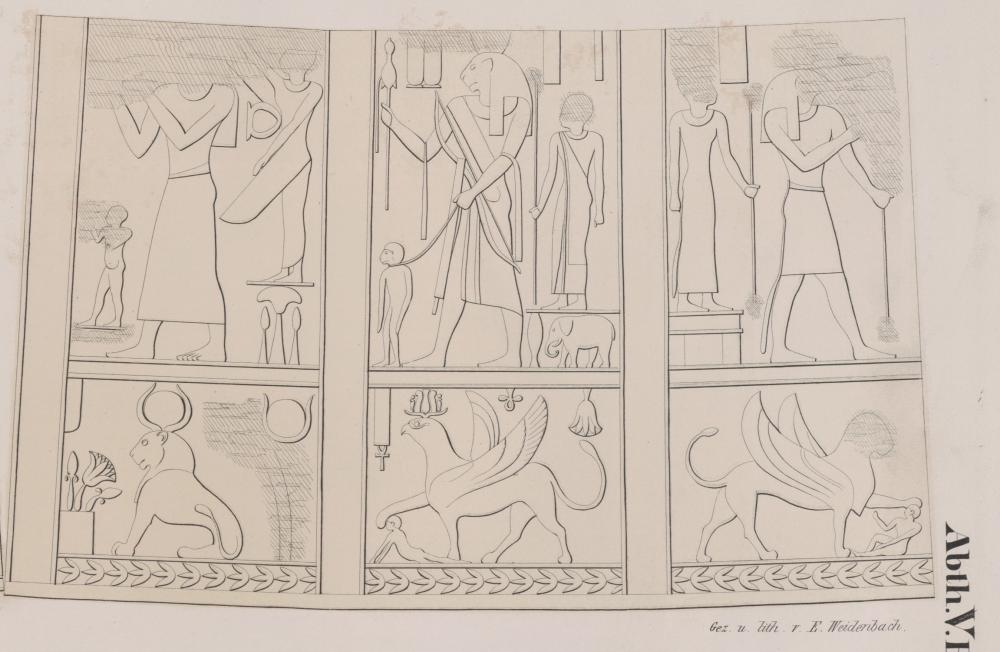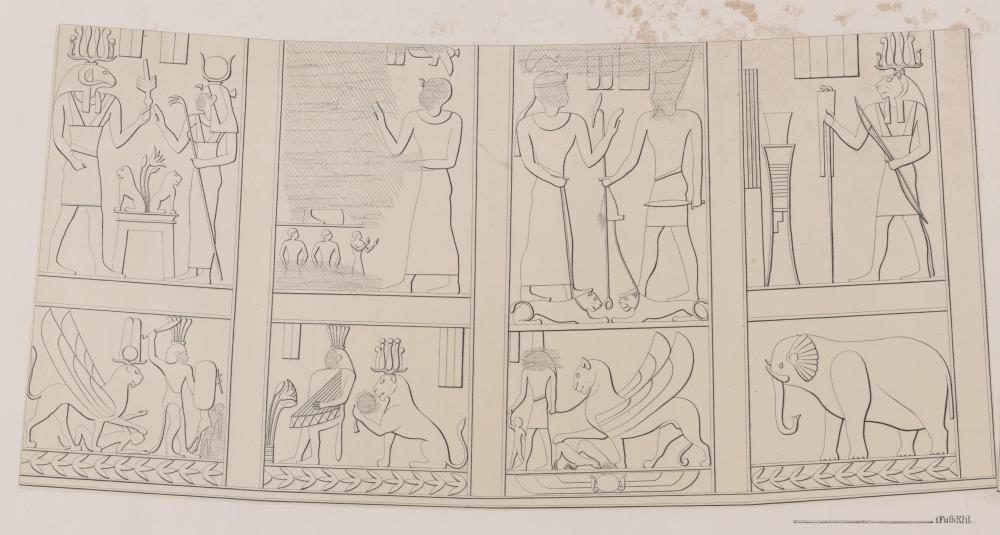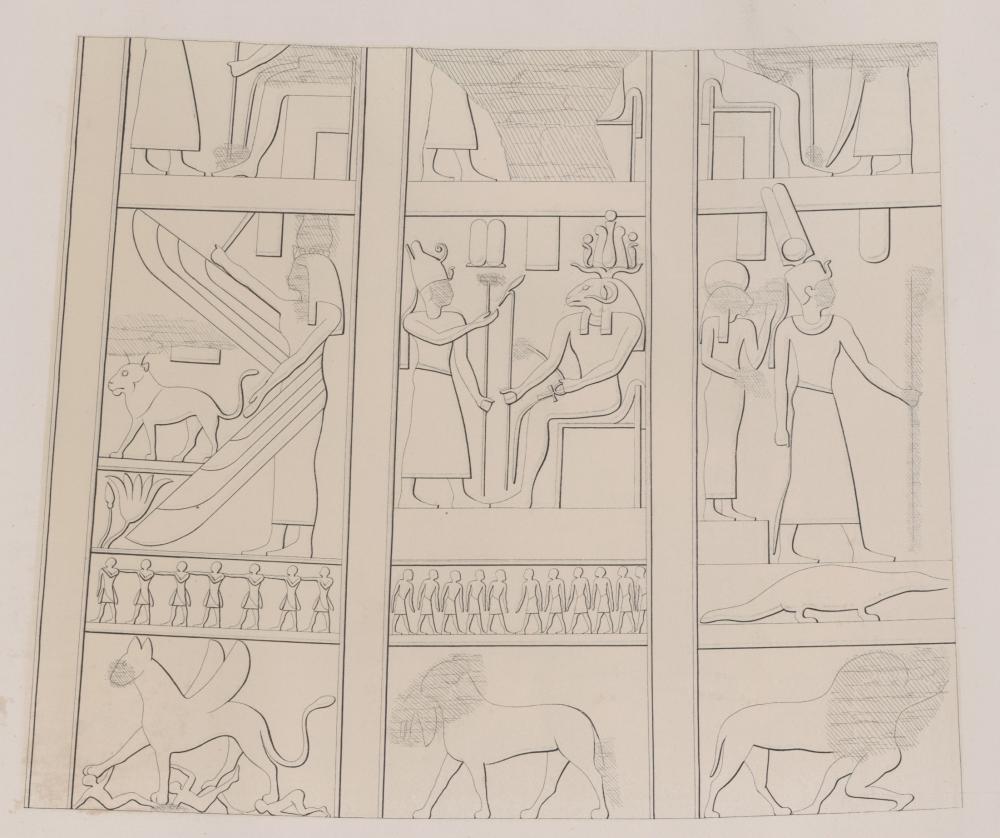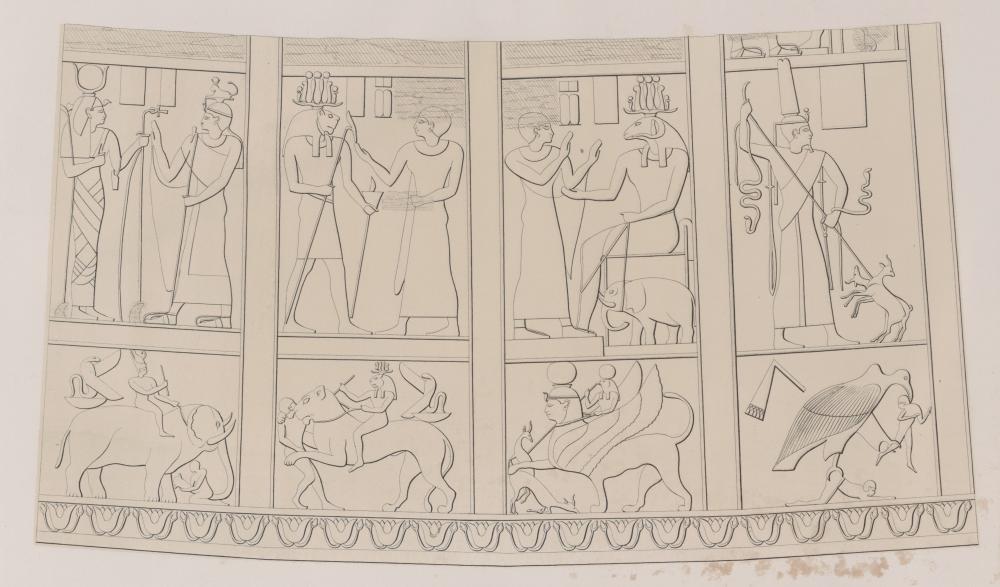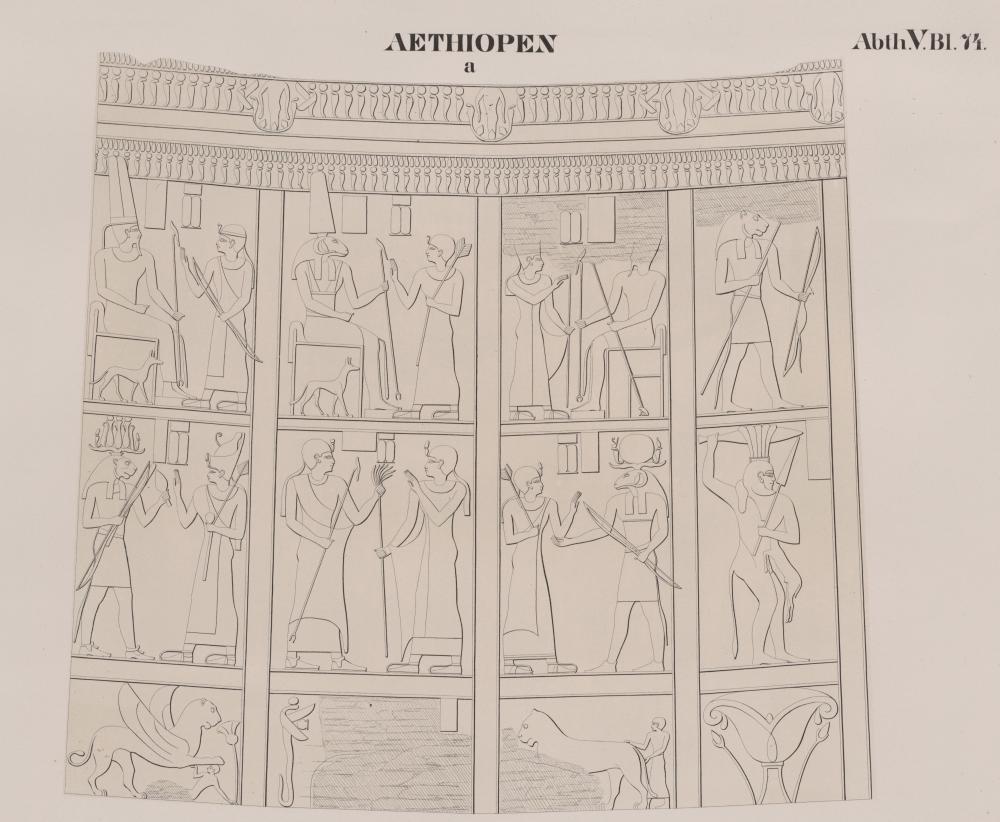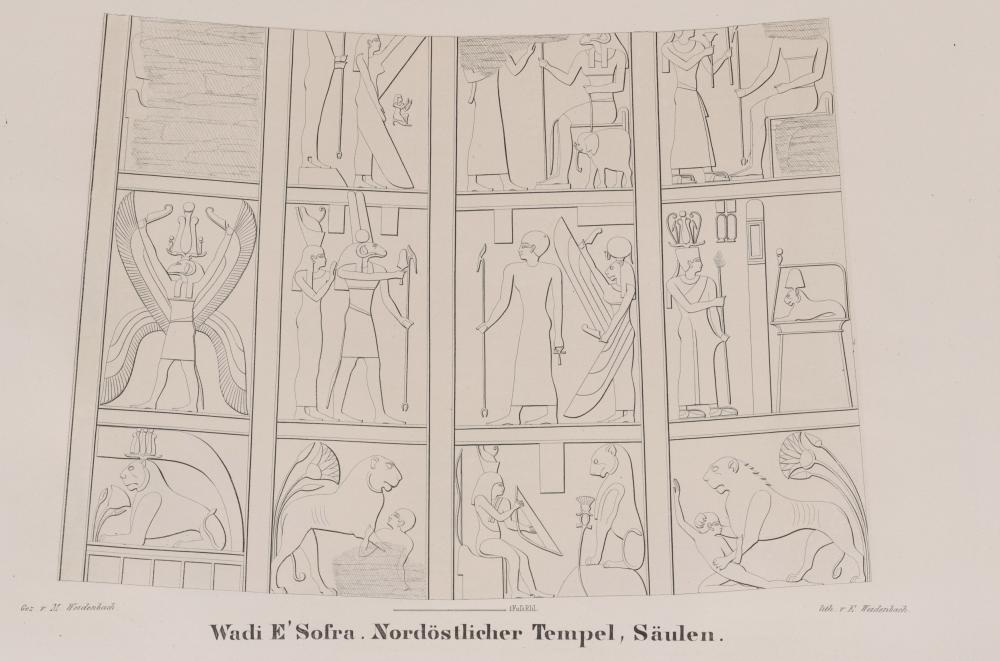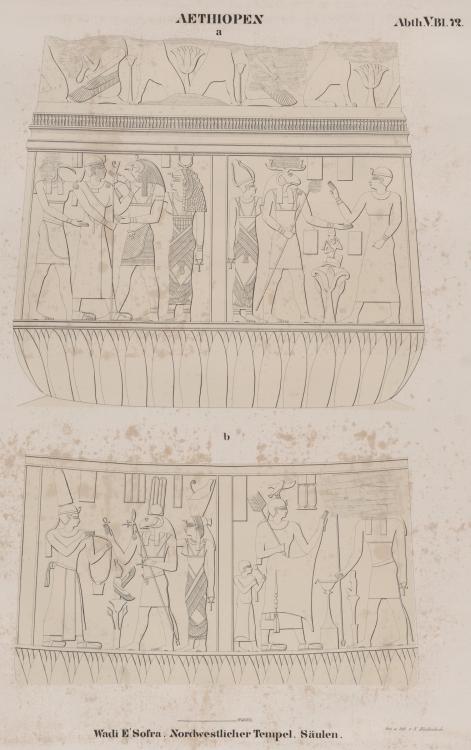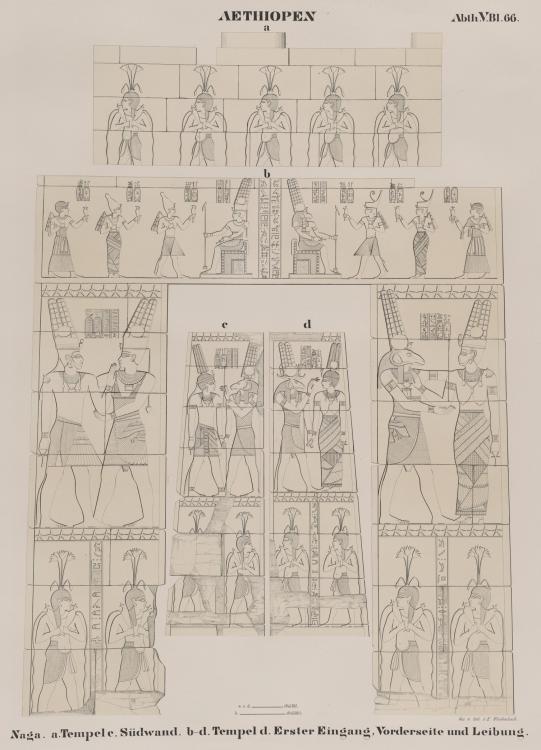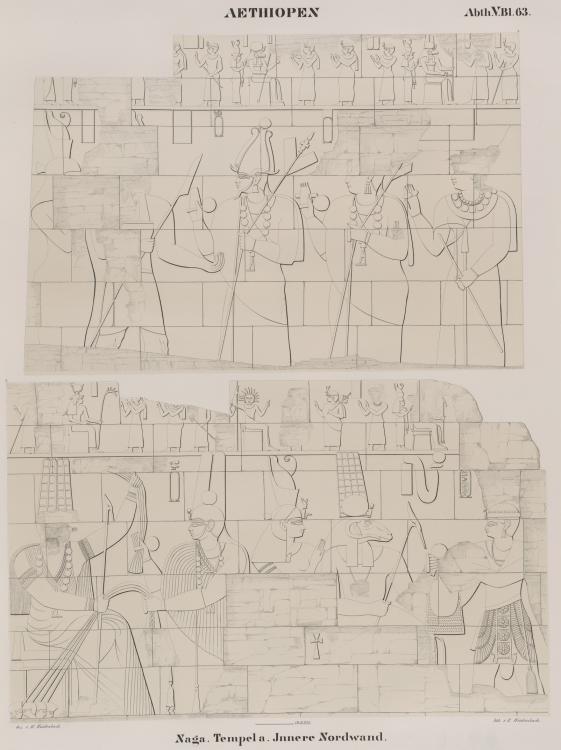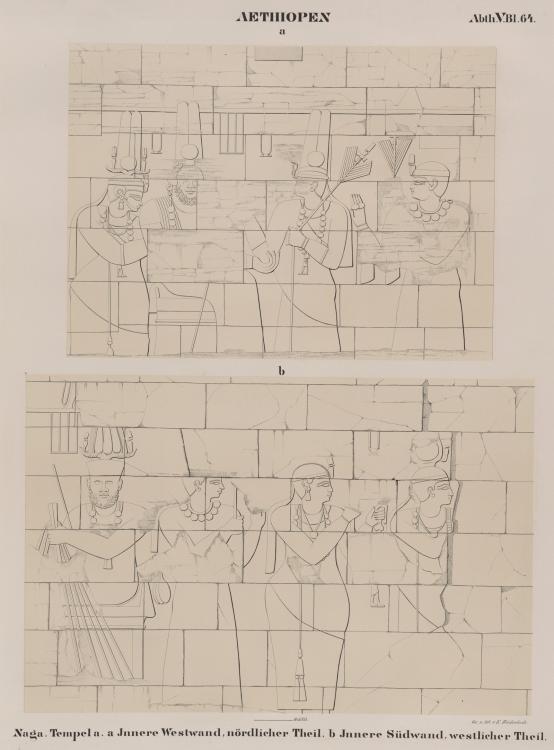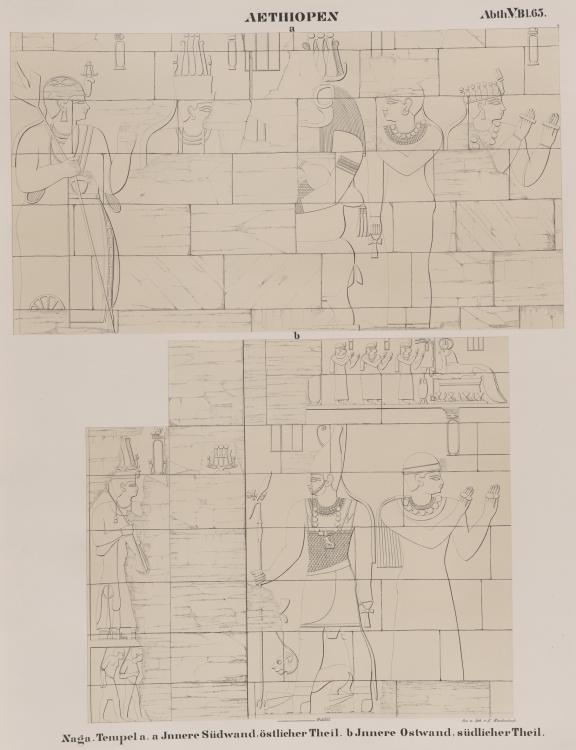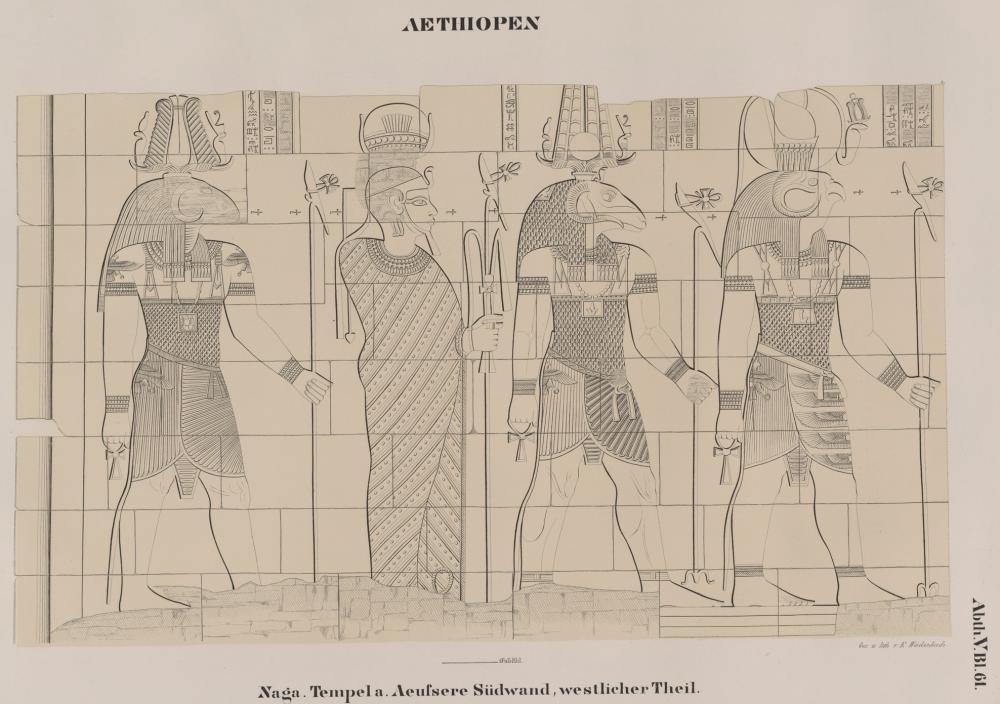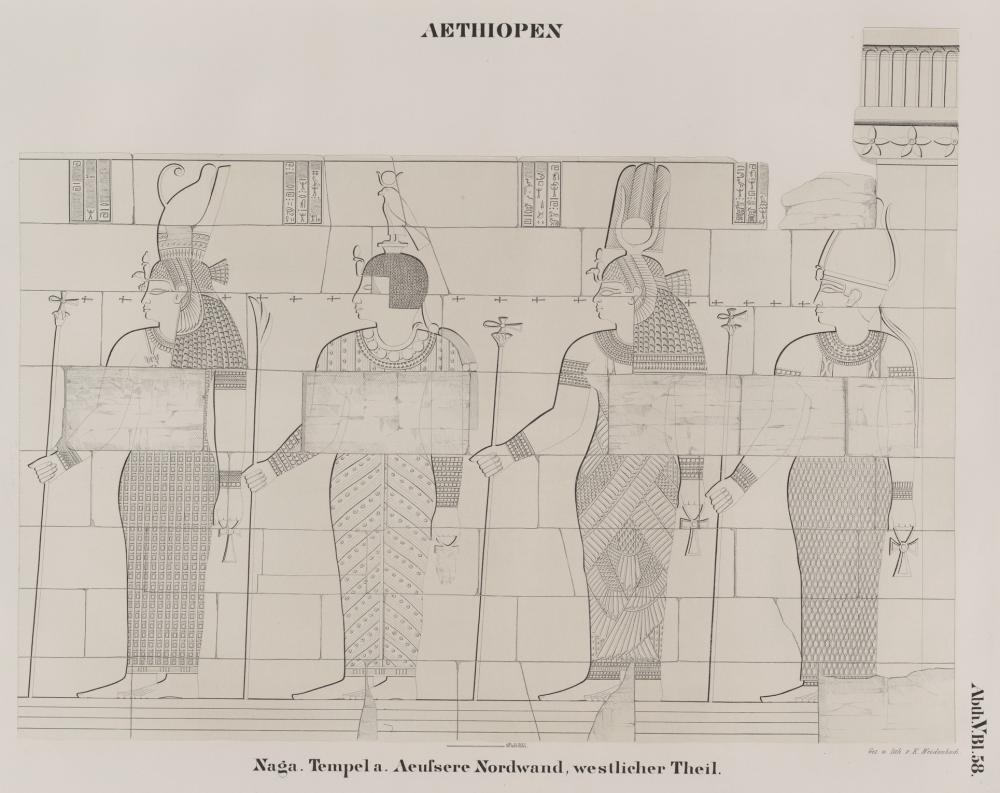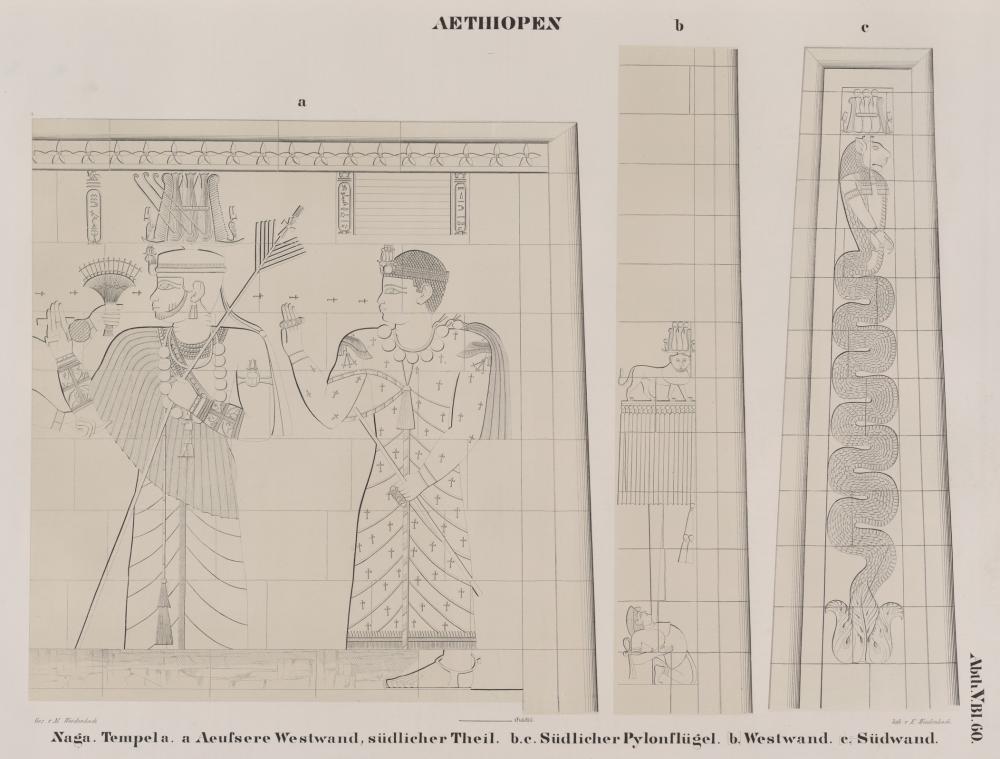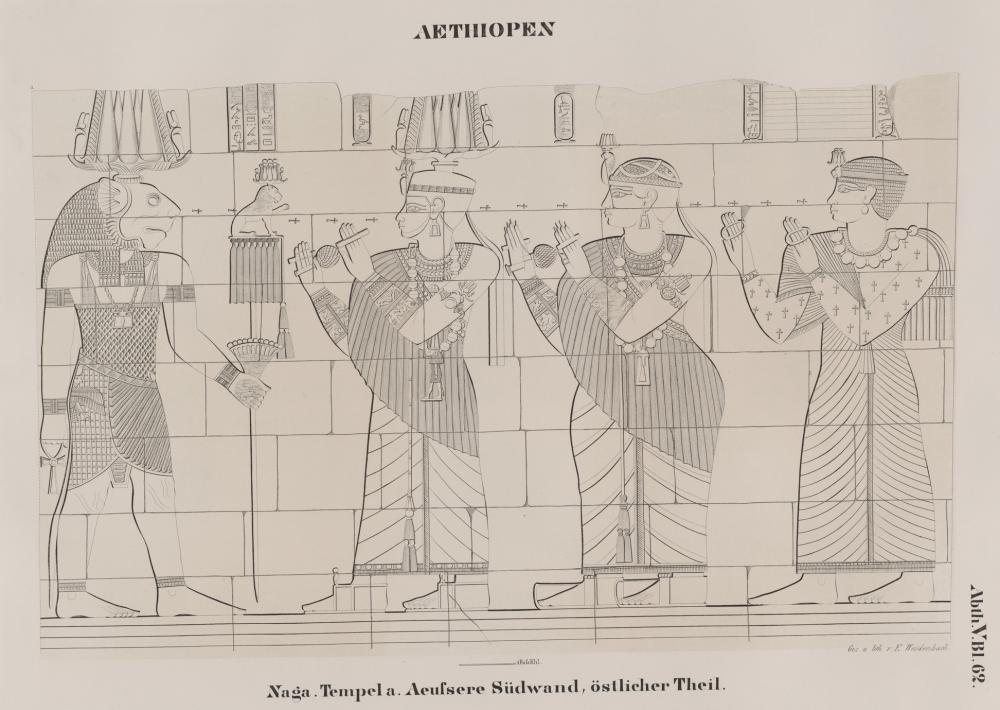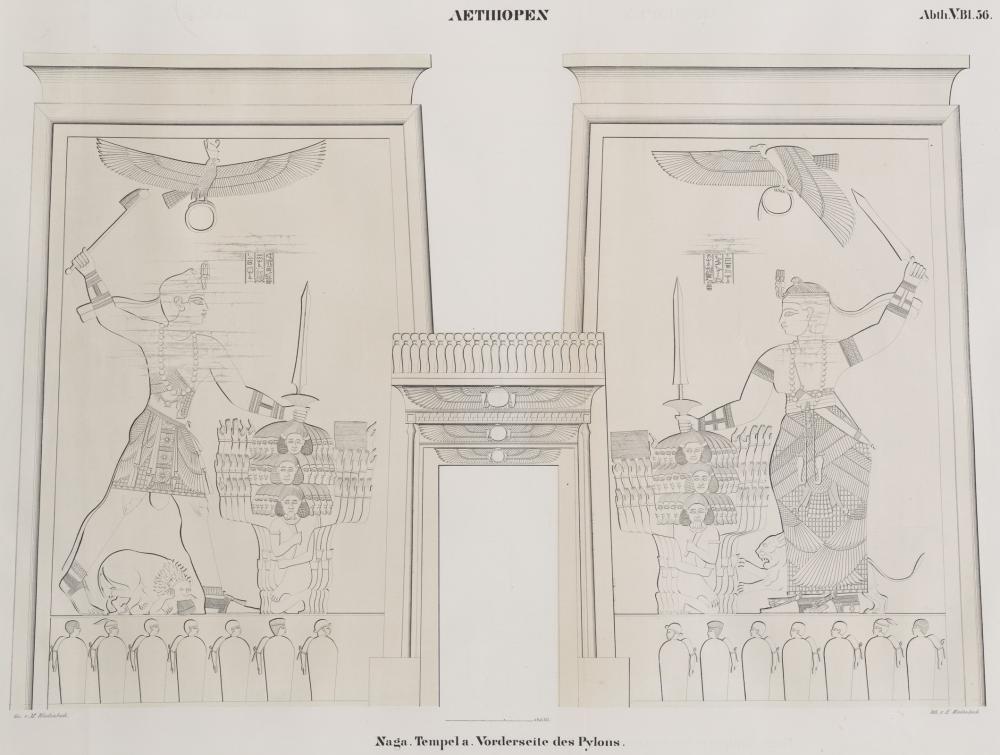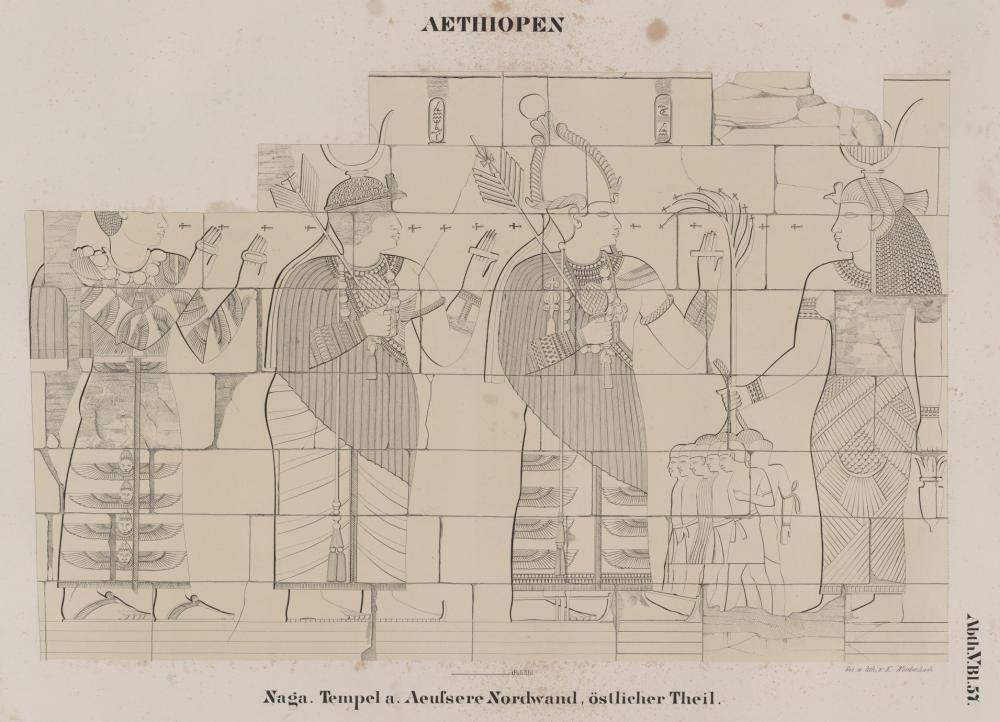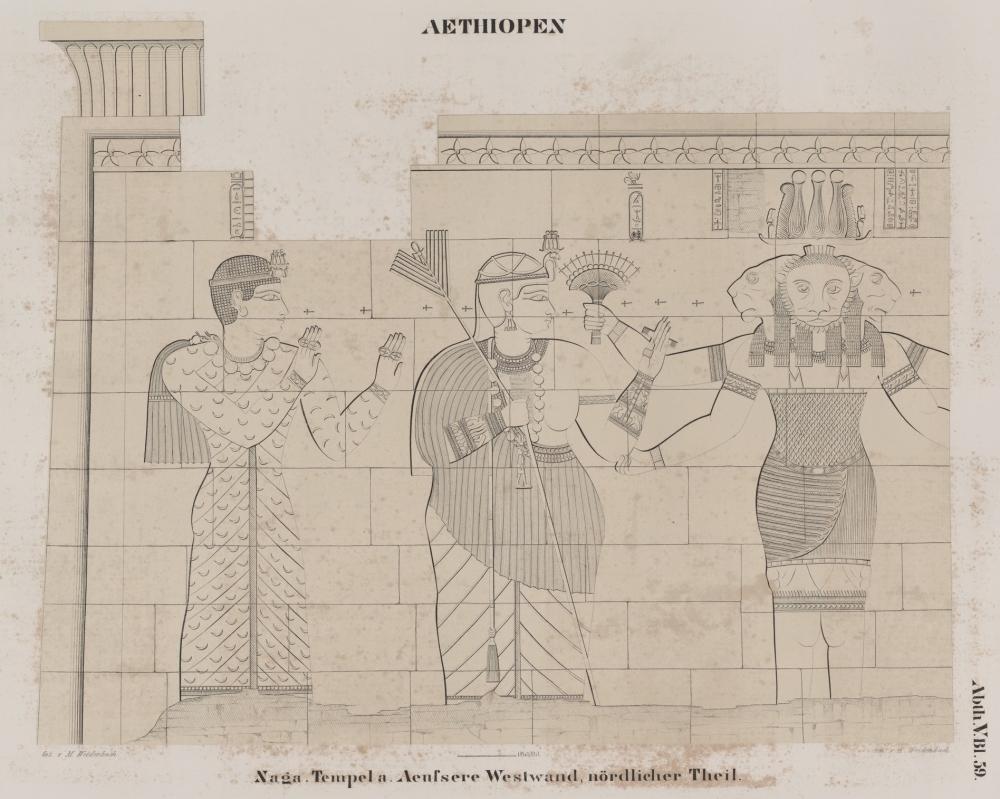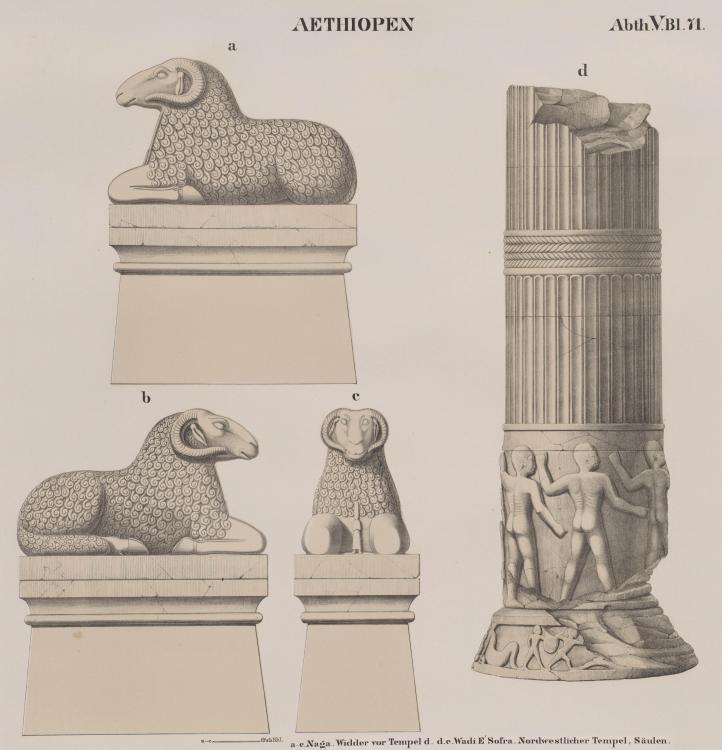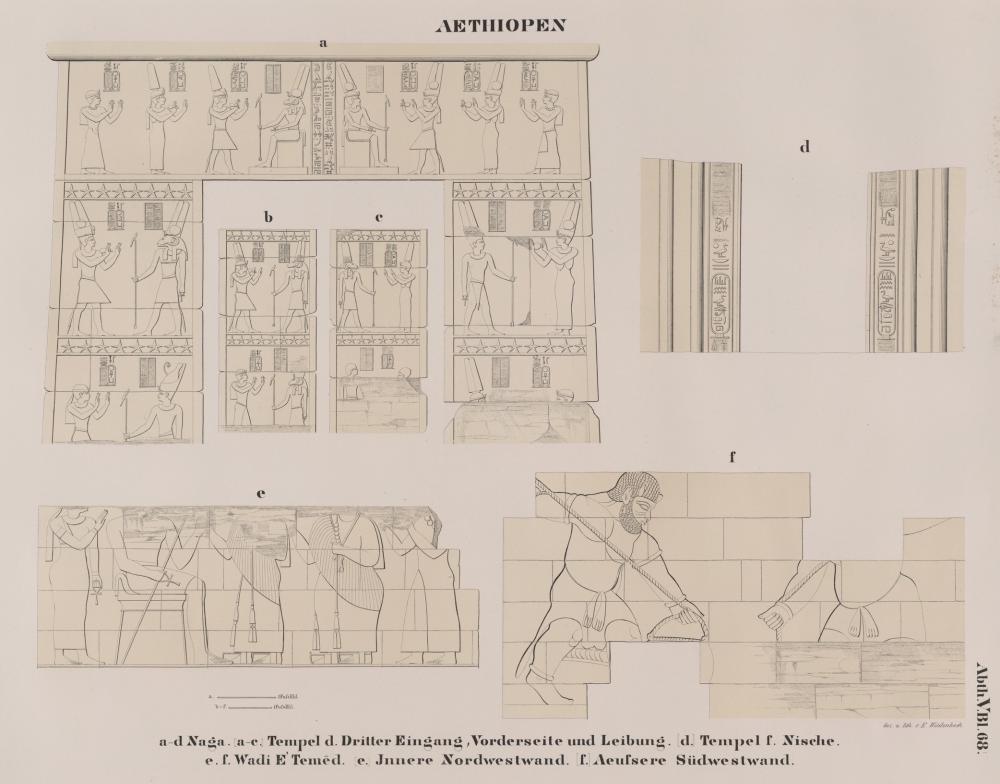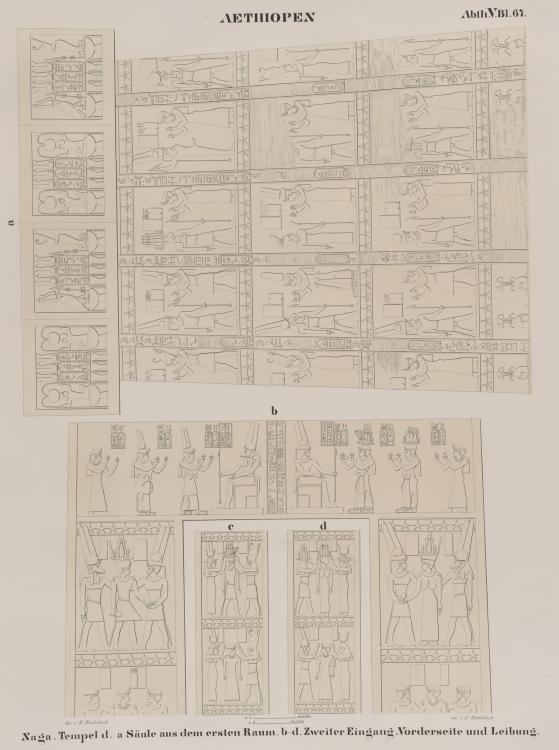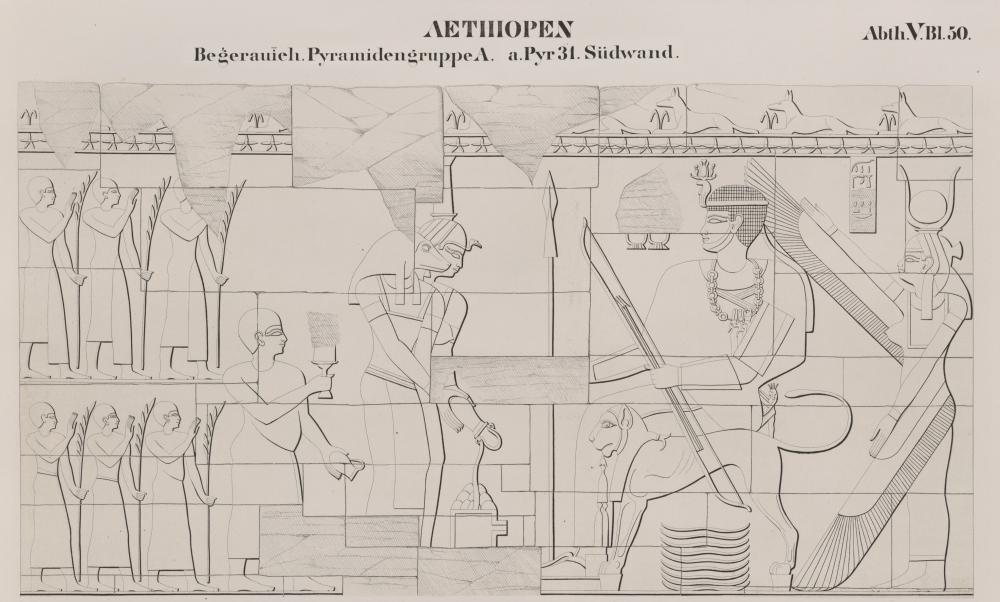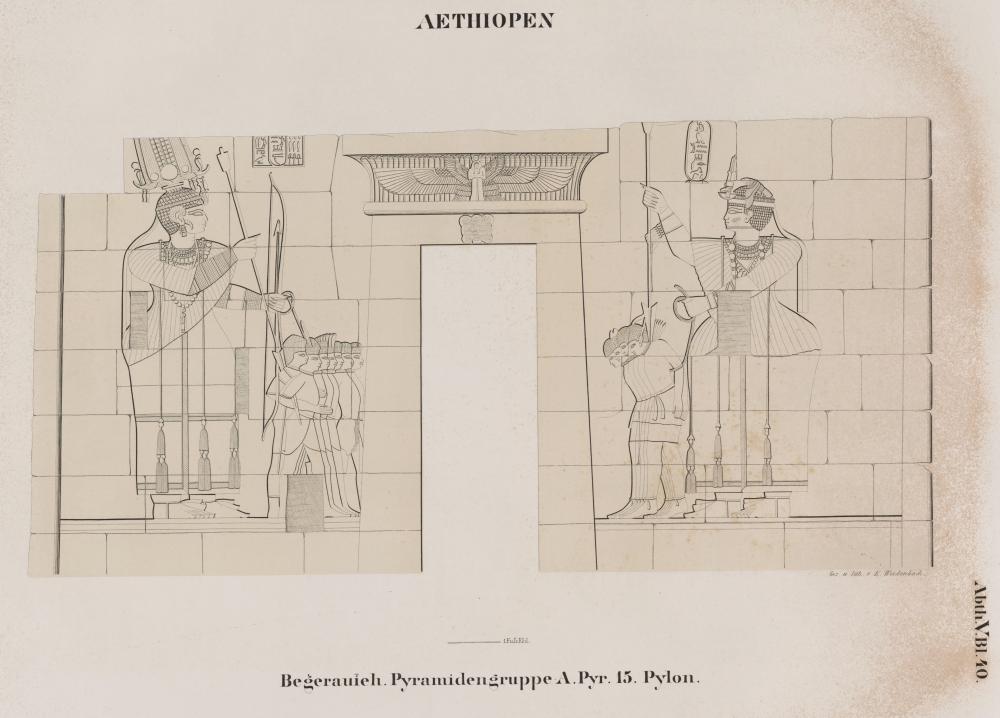Leaderboard
Popular Content
Showing content with the highest reputation on 2017-09-20 in all areas
-
The Kingdom of Kush: Battle Scene, Horses and Chariots A few more relevant reliefs As you might have noticed, there is an absolutely spectacular lack of militaristic artwork from Kush, almost to the point of frustration. I have come to understand that this is due to the fact that the vast majority of surviving reliefs come from funerary and religious monuments, which don't often depict fighting scenes and warriors. This doesn't mean that such scenes don't exist. The existing ones are just very poorly documented. Other reliefs/murals/fresco's of fighting scenes and warriors might have been found in the more secular households and palaces of warriors and nobles, built of mud-brick and have since completely deteriorated, and many of the scenes in temples were on the upper parts of the temple walls, which have also since deteriorated. Luckily, there are exceptions, and I found some reliefs I've been looking for for months! I've read about them, and quoted some of those descriptions in previous posts, but was never able to actually locate them, until now. Some date to the 25th dynasty, some to the Napatan and others to the Meroitic period. These examples all come from Napata (specifically from the temple complex at Gebel Barkal) and Meroe. Important elements: Fragmented battle scene of 25th dynasty conquest of Egypt, showing Egyptian chariots and horseman Many Kushite horses Fragment of relief depicting Kushite chariots Fragment of relief depicting boats on the river (of the same shape as some graffito of boats at Musawwarat) Depictions of spear, bow, battle axe, axe/mace, sword and scabbard, Squarish oval shield as well as round shields carried on the shoulder3 points
-
2 points
-
I explore skins and I was intrigued with some nudes. i want some gore, artistic gore, some gladiator or Rome hbo style. Not Spartacus excessive violence. with sex can be some erotic, not pornographic. Alcohol can have a place here.1 point
-
So, here is my idea about geographical random maps, such as Mediterranean or Red Sea. I've wrote this quickly so if it's not understandable, please tell me, I will rephrase and perhaps add some mockups. The idea is to add a feature that allows to choose the user starting position on geographical random maps. Here is the situation : Let's say that five players want to play a match on Mediterranean, Normal size. They start by choosing their factions : Player 1 chooses Gauls, Player 2 chooses Athenians, Player 3 chooses Persians, Player 4 chooses Egyptians, Player 5 chooses Carthaginians. Player 4 (ptol) starts in Gaul/France, player 3 (pers) starts in Illyria/Yugoslavia, player 2 (athe) startss in Syria, player 5 (cart) starts in Egypt, player 1 (gaul) starts in Maghreb. The players CC placements are determined randomly (it's not a fixed placement) and the starting posisitons are attributed randomly to the players. Case 1: choosing a faction and choosing a starting point But let's say that those 4 players want to play a "realistic" match, where player 1 (gaul) gets the Gaul starting position, player 2 (athe) gets the Illyrian one, player 3 (pers) gets the Syrian one, player 4 (ptol) gets the Egyptian one, player 5 get Maghrebian starting position. They would like to define those starting positions in the match setup screen, when they choose their civ. In order to do that I think we should be able to divide a random map of a certain size into zones, each of them containing one or several potential player CC placements. For example, on Mediterranean, normal size, we would have one "Gaul" zone, one "Germany/Poland" zone, one "Eastern Europe/Russia" zone, one "Yugoslavia" zone, one "Turkey/Near-East" zone, one "Egypt" zone, one "Lybia" zone and one "Maghreb" zone. The players would be able to choose a starting zone in the match setup screen in a list, or to set it on random to get the current default behavior. In our case, player 1 would choose the zone "Gaul", player 2 would choose "Yugoslavia", player 3 would choose "Turkey/Near-East", player 4 would choose "Egypt", player 5 would choose "Maghreb". Now what about Britain ? Iberia ? Greece ? Well those places are too small for a CC placement in Mediterranean Normal, no player can start here. But I guess it's possible on Mediterranean Large, Very Large or Giant. This is why the zones should be defined differently depending on the size of the map. On "Very Large" there should be one or several "Britain" zones, one or several "Iberia" zones and one or several "Greece" zone (perhaps even a "Macedon" zone and a "Laconia" zone, I don't know how big this map is). Of course in the case of users choosing both their faction and their starting position, the GUI shouldn't assume that the player choosing Britain will play the britons, or that the user choosing the britons will start in Britain. The point is to allow the users to choose a starting position, for example to have realistic positioning, but not to force them to choose a realistic positioning. The player choosing to start in Britain should still be able to choose the egyptians in the list. Case 2: choosing a starting point but no faction Now let's assume that all players want to play with realistic positioning, but would like their civ to be chosen in a semi-random way. Let's say that we're playing Mediterranean on a size that is big enough for "Greece" to be a zone with one CC placement. A player should be able to choose "Greece", check a "realistic civ placement" checkbox and set the faction on "random", and have the game choose between athenians, macedonians and spartans. That would mean that each zone would be associated with a list of possible factions you get when you set the faction on "random" and check the "realistic civ placement" checkbox. An other possibility would be to implement the "semi-random faction choice" in the GUI. Instead of having one choice in a list of factions we would have several boxes to check, and let the game choose randomly into that sublist. For example if I want to play any civ but the celts, the greek and the successors, I would check "romans", "iberians", "carthaginians", "persians" and "maurya" and the game would choose randomly between those five. I am in favor of the second option since it does not depend on the particular case I'm talking about here, and could be applied to any map. But I also think that each zone should have a list of realistic factions to play on, for the next case below. Case 3: no starting point choice, no faction choice Now let's assume that all players still want to play with realistic positioning, but don't want to know their faction or starting position, like in a classic random map match. The players all choose "random" for the civ and the starting zone, and check the "realistic positioning" checkbox. Then we would have, for example, the Player 4 starting in Gaul with the gauls, player 3 starting in Illyria with the athenians, player 2 starting in Syria with the persians, player 5 starting in Egypt with the ptolemies, player 1 starting in Maghreb with the carthaginians. What do you think ?1 point
-
1 point
-
1 point
-
1 point
-
1 point
-
1 point
-
@wowgetoffyourcellphone Code has been written by @vladislavbelov so it would be possible. Not implemented though. Also not sure it wouldn't mean having to re-export every single anims.1 point
-
You play the game and you played another rts specially AoE series? -------------- with music there are a guideline. https://wildfiregames.com/forum/index.php?/topic/14632-music-contribution-guidelines/1 point
-
1 point
-
So.... I was accepted into the beta. Downloaded it, and.... single player has been disabled by the devs to force players to test multiplayer. lol. Even the parts I do have access to are buggy and feel like an alpha. I tried multiplayer and it bugged out. Couldn't join a game. I'll wait until single player is re-enabled.1 point
-
1 point
-
yes, i got the mesh file ready only need to adapt the textures but i'll do it tomorrow.1 point
-
Walls. Make all wall towers shoot 0 default arrows. Visible garrison only, just like wall sections. No rooftops. Just a slight range buff for archers over garrisoning walls. In city phase all civs can upgrade individual towers with sentry houses for a cost. This adds a roof and 1 or 2 default arrows. No garrison arrows. Give advanced civs option to upgrade individual wall towers further to scorpion towers that shoot scorpion/oxybeles bolts. No garrison arrows. Point is they shoot no extra garrison arrows and start out shooting 0 default arrows. Only later can you upgrade them to auto-shoot, but on an individual basis so that the cost scales up.1 point
-
1 point
-
Equipments A various assortment of Han armor displayed. The levies on the left are wearing simple lamellar plaits while the officers donned heavy overlapping scale and lamellar armor. They also wears scale helmets Chinese armors from Shang to the Sui dynasties (2600BC-550AD) 4-7 represents Zhou and Warring State Armor, including Qin Armor 5-7. Most of the Armor of 400 years of the Han would range from 5- 10. Note that there was an attempt to both make the armor more flexible while covering more of the body~ note also that 8, 10 offered good protection as cavalry armor. 11-12 represents Jin- early Tang armor Earlier Han armor: the first swords man wears an almost identical armor to Qin terracotta soldiers. It would be constructed of rigid bronze plates connected by cords sewn over the leather underneath. The second infantry man displays a rigid lamellar armor of simple construction. Lamellar plaits are worn by the lighter components of the cavalry, while officers wears very heavy "fish scale" armor and scale helmets. New Han armor: a scale corselet and a scale armor of an officer. These not only provided more flexibility but also covered over more of the exposed body like the spleen. They were also excellent cavalry armor During the Han dynasty, new style of armour such as scale corselet made of leather and/or iron were adopted. During this time period, the primary metal used in armour was iron, and occasionally steel. Early Han soldiers would have used armour and weapons produced during the Qin era. The Han army had armour standardized to meet the need. Armour used by the Han included coats of plates; 两当铠 (liang-tang, or "double-faced" armour); and lamellar cuirases made of metal or leather that was suspended over the shoulders by cords. This armour was used by both the infantry and the cavalry. A much heavier and more expensive version, consisting of metal plates laced together, was worn by officers. Various armors from the early Han to the Three Kingdom era. Levy armor, cavalry armor, and officer's armor. During much of the Warring States period, most light cavalry units served as skirmishers - thus armour for cavalry was rare, as it was not seen as necessary. Armour for heavier cavalry tended to be lighter than that of the infantry. Cavalry armour was usually constructed entirely of leather, and lacked shoulder protection. However, during the late Warring States era and the dynasties succeeding it, cavalry armour gradually become heavier and more elaborate. By the time of Eastern Han, there appeared heavy cavalry with full body protection for both rider and horse, ranging from coat of plates to lamellar. Melee fighting and deep charges were not only expected, but thoroughly planned. Shields were used by both infantry and cavalry. These shields were usually made of wood and often reinforced by a metal centre and rim. It should be point out that compared to the armor of the Mediterranean world, even the heaviest elements of the Han army appears to be much lighter armored, however its also important to point out that while the Mediterranean world along the olive line contended each other with mostly infantry battles~ where the Roman style of heavy infantry warfare reigned supreme (with the exceptions of the Celto-Iberians and the Numidians.) When we apply that comparison to the Han army it was akin to Han's wars with the Vietnamnese and Korean kingdoms, which early on mostly utilized infantry with limited cavalry support. The analogy of the condition the Han faced with the Xiongnu would be comparable to Rome's entanglements with the Parthians and the Scythians, both foes which Rome never decisively crushed. Thus it should be noted the Han army primary, secondary, and existential purpose was to counter the horse archer armies from the steppe~ blending versatility with with mobility. Despite this point, the Han armor, and Chinese armor in general would continue to become heavier and more elaborate until culminating in the heaviest forms of Tang cataphracts and the cataphracts of the Jin dynasty~ where both men and horse are fully armored behind steel lamellar plates. For its time being- when compared to the rest of Asia~ the Han army was the most heavily armored army in the region until the advent of the extremely heavy clibanarii fielded by the Koreans Kingdom of Goguryeo in the 600s For nearly four centuries, the Han possessed one of the most heavily armored armies in Asia, until the degree of armor and armament was surpassed by the Clibanarii of the Koreans. ~ To War Campaigns conducted by Emperor Wu, and two of his generals Wei Qing and Hou Qubing, involving projecting beyond the Great Wall through the narrow Gansu Corridor (on the east) and into the dry and barren Taklamakan Desert, where at its center was an arrid wasteland, the various confederations of the Xiongu would have settled in a ring around the desert, called the Ordos Loop, each a small nomadic chiefdom of its own During Emperor Jing's reign, the frontiers were further fortified, the Han court initiated breeding programs for military horses and established 36 large government pastures in the border regions, extending from Liaodong to Beidi. In preparation for the military use of the horses, the best breeds were selected to partake military training. The Xiongnu frequently raided the Han government pastures, because the military horses were of great strategic importance for the Han military against them. By the time of Emperor Wu's reign, the horses amounted to well over 450,000. By the reign of Emperor Wu (r. 141–87 BC), the Han empire was prospering and the national treasury had accumulated large surpluses. However, burdened by the frequent Xiongnu raids at the frontier of the Han empire, the emperor abandoned the placating policies of his predecessors to maintain peace with the Xiongnu early in his reign~ and resorted for a knock out confrontation with the hordes. In 136 BC, after continued Xiongnu incursions near the northern frontier, Emperor Wu had a court conference assembled. The faction supporting war against the Xiongnu was able to sway the majority opinion by making a compromise for those worried about stretching financial resources on an indefinite campaign: in an engagement along the border near Mayi, Han forces would lure the Xiongnu Chieftan over with wealth and promises of defections in order to eliminate him and cause political chaos for the Xiongnu- as the Xiongnu has an extremely unstable system of succession. Music: At the Emperor's Palace In 133 BC, the conflict escalated to a full-scale war when the Xiongnu realized that the Han was about to ambush them at Mayi. The Han court decided to deploy several military expeditions towards the regions situated in the Ordos Loop, Hexi Corridor, and Gobi Desert in an attempt to conquer it and expel the Xiongnu from using the local city states as staging points. At the start of Emperor Wu's reign, the Han empire had a standing army comprising 400,000 troops, which included 80,000 to 100,000 cavalrymen, essential to the future campaigns against the Xiongnu. However, by 124 BC, that number had grown to a total of 600,000 to 700,000 troops, including 200,000 to 250,000 cavalrymen. In order to sustain the military expeditions against the Xiongnu and its resulting conquests, Emperor Wu and his economic advisors undertook many economic and financial reforms, which proved to be highly successful. For both his acumen and martial prowess, his successors would name him "the martial emperor" ("Wu" or "Wudi"~ meaning "martial emperor" is not his name but a qualifier given by his successors- like Augustus) The bloody Battle of Mobei (119 BC) saw Han forces invade the northern regions of the Gobi Desert. In 119 BC, two separate expeditionary forces led by two veteran Han generals Wei Qing and Huo Qubing mobilized towards the Xiongnu. The two generals led the campaign to the Khangai Mountains where they forced the Xiongnu chief Chanyu to flee north of the Gobi Desert. The two forces together comprised 100,000 cavalrymen, 140,000 horses, and few hundred thousand infantry. They advanced into the desert in pursuit of the main force of the Xiongnu. Despite the bloody cost, the military campaign was a major Han military victory against Xiongnu, where the Xiongnu were driven from the Gobi Desert. The Xiongnu casualties ranged from 80 to 90 thousand troops, while the Han casualties ranged from 20 to 30 thousand troops. In the aftermath, the Han forces had lost around 100,000 horses during the campaign. The 20 year old general Huo Qubing's army encircled and overran their enemy, killing around 70,000 Xiongnu, including a chieftain commander deigned Tuqi- King of the Left. They also captured three Xiongnu lords and 83 Xiongnu nobles. Though an exhaustive affair, after Mobei, the initiative and momentum fell to the Han, from then on, the Xiongnu were put on the defensive as the Han army tried to detach the various Xiongnu vassals in the Tarim Basin one by one to cajole them into the Han fold. It would be a war of diplomacy and bribery, both the Han and the Xiongnu would each offer various terms and privileges to the local city states and the kings. Hereafter, the war progressed further towards the many smaller states of the Western Regions. The nature of the battles varied through time with many casualties during the changes of possession or loss of actual control over the western states near the frontier regions. Regional alliances also tended to shift or get broken forcibly depending on the situation as one party gained the upper hand in a certain territory over the other. Due to the many losses inflicted to the Xiongnu, native rebellion soon broke out and former enslaved people rose up to arms against their steppe overlords. Around 80 BC, the Xiongnu attacked the Wusun (an Indo- European state in the region) in a punitive campaign and soon the Wusun monarch requested military support from the Han empire. The Wusun (grand children of the crows) tribe became one of Han's main auxillaries, they were an Indo-European people characterized by this golden brooch found in the burial mound of one of its nobles. In 72 BC, the joint forces of the Wusun and Han invaded the territory of the Xiongnu Chief- King of the Right. Around 40,000 Xiongnu people and many of their lifestock were captured before their city was sacked after the battle. The very next year, various native tribes invaded and raided the Xiongnu territory from all fronts; Wusun from the west, Dingling from the north, and Wuhuan from the east. The Han forces had set out in five columns and invaded from the south. According to Hanshu, this event marks the beginning of Xiongnu decline and the dismantlement of the confederation. The Eastern Han (25-220 AD.) also known as the Later Han, was formed on 5 August 25, 25 AD. after 14 years of chaos where the Han minister Wang Mang usurped his Emperor and proclaimed his own short- lived and disastrous "Xin" (meaning "new") dynasty. At once, many rebellions erupted across the Han Empire. During the widespread rebellion against Wang Mang, the state of Goguryeo was free to raid Han's Korean commanderies; Han did not reaffirm its control over the region until AD 30. The Trưng Sisters of Vietnam rebelled against Han in AD 40. Their rebellion was crushed by Han general Ma Yuan (d. AD 49) in a campaign from AD 42–43. Wang Mang renewed hostilities against the Xiongnu, who were estranged from Han until their leader Bi (比), a rival claimant to the throne against his cousin Punu (蒲奴), submitted to Han as a tributary vassal in AD 50. This created two rival Xiongnu states: the Southern Xiongnu led by Bi, an ally of Han, and the Northern Xiongnu led by Punu, an enemy of Han. During the turbulent reign of Wang Mang, Han lost control over the Tarim Basin, which was conquered by the Northern Xiongnu in AD 63 and used as a base to invade Han's Hexi Corridor in Gansu. But the Han under general Dou Gu was able to swiftly reconquer the area and evict the invaders from the frontier region. Between 73 to 102 AD, General Ban Chao led several military campaigns in the Tarim Basin, Ban Chao enlisted the aid of the Kushan Empire, occupying the area of modern India, Pakistan, Afghanistan, and Tajikistan, to subdue Xiongnu Kashgar and its ally Sogdiana from the west, while he would attack the basin from the east. In his series of successes. He re-establishing Han control over the region and drove his foe as far as the Caspian Sea in the west. The war resulted in the total victory of the Han empire over the Xiongnu state in 89 AD. The warpath of Ban Chao, general, explorer and diplomat of the Eastern Han Dynasty. Breached through the Xiongnu states until he drove them as far as the Capsian Sea in the west. There are some historians who claimed that he stumbled upon western mercenaries that fought in the Roman manner. The ultimate Han victory in these wars eventually forced the Southern Xiongnu to accept vassal status as Han tributaries. These campaigns expanded Han sovereignty into the Tarim Basin of Central Asia, tore the Xiongnu into two separate confederations, and helped establish the vast trade network known as the Silk Road, which reached as far as the Mediterranean world. There, In addition to tributary relations with the Kushans, the Han Empire received gifts from the Parthian Empire, and initiated an unsuccessful mission to Daqin (Rome) in AD 97 with Gan Ying as emissary. A Roman embassy of Emperor Marcus Aurelius (r. 161–180 AD) is recorded in the Hou Hanshu to have reached the court of Emperor Huan of Han (r. AD 146–168) in AD 166, though some asserts that this was most likely a group of Roman merchants. Though the Southern Xiongnu tribes remained as allies of the Han, the Northern Xiongnu Confederations persisted in raiding the frontiers along the entire northern western frontier. ~ The Final Blow Beneath the Altai Mountains In 89 AD, General Dou Xian led a Han expedition against the Northern Xiongnu. His 78,000 (46.000 Han troops with 30,000 Southern Xingnu, and 8000 auxillieries) army would tackle the Northern Xiongnu army numberin 216,000, at the foot of the Altai Mountains The army advanced from Jilu, Manyi, and Guyang in three great columns. In the summer of 89, the forces—comprising a total of 40,000 troops—assembled at Zhuoye Mountain. Near the end of the campaign, Dou's forces chased the Northern Chanyu (Xiongnu) into the Altai Mountains, killing 13,000 Xiongnu and accepting the surrender of 200,000 Xiongnu from 81 tribes. A light cavalry of 2000 was sent towards the Xiongnu at Hami, capturing the region from them. General Dou Xian marched with his troops in a triumphal progress to the heartland of the Northern Xiongnu's territory (near present-day Ulaan Baatar) and erected a stele at Mount Yanran, before returning to Han. The Han victory in the campaign of 89 AD resulted in the destruction of the (Northern) Xiongnu state. The significance of this occasion was something beyond the mortal duel between Rome and Carthage, but more akin to Rome itself not only breached through the many Germanic tribes on its northern frontiers, but also drove it to the "Spawning" place of the German people~ at the heart of the "Womb of Nations" in Scandza~ the mortal threat was gone. The Western region would remain a relatively stable front for centuries to come. Ban Chao, general, explorer, governor, and diplomat of the Western Regions. His name literally means, "surpass excellence." ~ A New Chapter With the destruction of the Xiongnu threat, the Han reached a new era in its military. Though there were still many neighboring major steppe confederations such as the Xianbei, the Rouran Confederation (who would establish their own Chinese dynasty called "Northern Wei") the Yuezhi, and the White Huns, for the time being, the Han maintained a cordial, if stable relation with them all. Following the military successes against the Xiongnu, General Ban Chao was promoted to the position of Protector General and stationed in Kucha in 91 AD. At the remote frontier, Ban Chao reaffirmed the Han court's over-lordship over the Western Regions from 91 AD onwards. By the conclusion of the so called Han- Xiongnu War, the western front would be left in peace~ until the coming of another series of relentless hordes, the Huns and the Kushans. The Southern Xiongnu—who had been situated in the Ordos region since about 50 AD—remained within the territory of the Han empire as semi-independent tributaries. They were dependent to the Han empire for their livelihood as indicated by a memorial from the Southern Chanyu (Xiongnu) to the Han court in 88 AD. During the reign of Emperor Wu, he sent out Zhang Qian as his envoy to distant lands in the west, he brought back important information in regards to the Kushans, the Sogdians, and the Bactrians, as well as Parthia. Though the Xiongnu still operated fiercely in the area during his travels (100BC- contemporaneous to the Civil Wars of the Roman Republic,) his journey would pave the ways for formal relations to be established between China and the various polities along the vast trade network, eventually leading to the creation of the Silk Road. The stabilization of the frontier established the first nodes of the Silk Road, which paved the way for a direct access from Han China, and chinese goods to reach distant kingdoms like Bactria, the Kushan Empire, Sogdiana, and the Parthian Empire, and finally, Rome- which the Han called "Daqin" Empire. Buddhism, trade, and new ideas would all flow into the Empire until Buddhism became the new religion of the masses for the next five centuries to come. For the time being, the Western Regions would flourish as a quiet outskirt of on the empire's fringes, forgotten in solitude, it would became a buddhist sanctuary, a multi cultural, multi lingual society, and the entrance of the Silk Road. Though externally the Han accomplished its mission over its mortal foes, and also able to reaffirm its hold during the chaos of the crisis that separated the Han dynasty in two. The destruction of the Han Empire would actually come from within. Court intrigues and eunuchs would eventually destroy the Empire and plunge it into an era of high warlordom know as the Three Kingdoms. But that topic would be examined in another post entirely.1 point
-
i always wondered why those existed and now I know and that's real cool1 point
-
Disregard the link above, that is outdated information (last updated more than a decade ago...). https://trac.wildfiregames.com/browser/ps/trunk/binaries/data/mods/public/simulation/components/Armour.js#L46 If you want to know exactly. Damage strength * 0.9^armour_strength And the whole thing possibly multiplied by some multiplier (from damage bonuses, etc).1 point
-
Another day, another stream! 0AD stream will be starting now! Hope you guys can tune in and enjoy some more quality multiplayer games. https://www.twitch.tv/chaffcommandercoffey1 point
-
Well, they did have that obscure Indian connection, so who knows... The Kings of Kush, partaking in Kush from the Hindu Kush. Hehehehe...1 point
-
1 point
-
The Kingdom of Kush: The Lepsius Collection Kushite Reliefs of the Highest Quality "Karl Richard Lepsius (1810-1884) was a pioneering Prussian Egyptologist, linguist and a pioneer of modern archaeology. In 1842, Lepsius was commissioned by King Frederich Wilhelm IV of Prussia to lead an expedition to Egypt and the Sudan to explore the remains of the Ancient Egyptian civilisation. The Prussian expedition was modelled after the earlier Napoleonic mission, with surveyors, draftsmen and other specialists. The chief result of this expedition was the publication of Denkmäler aus Aegypten und Aethiopien (Monuments from Egypt and Ethiopia), a massive twelve volume compendia of nearly 900 plates of ancient Egyptian inscriptions, as well as accompanying commentary and descriptions. These plans, maps, and drawings of temple and tomb walls remained the chief source of information for Western scholars well into the 20th century, and are useful even today as they are often the sole record of monuments that have since been destroyed or reburied." -Wikipedia- I was able to acquire almost 70 high quality plates, from the book Denkmäler aus Aegypten und Aethiopien (Monuments from Egypt and Ethiopia), which depict a large amount of Kushite reliefs from the Napatan and Meroitic period. Some are from Gebel Barkal, the site of Napata, and some are from Naqa and Musawwarat es Sufra. The majority of them however, come from the royal necropolis at Meroe. They offer invaluable insights into Meroitic society, religion, funerary customs and the culture of royals and and their nobles. Many of these reliefs have now been lost, or are heavily deteriorated. Comparing today’s remaining reliefs with the plates in Lepsius’ work, shows us that we are dealing with the highest quality renditions of Meroitic and Napatan reliefs ever produced! The value of his work can not be overstated… The plates on these Kushite monuments from Sudan seem to be mostly unknown to modern academics: they’re from 1842-1845, are extremely poorly tagged in digital collections, use archaic nomenclature for place names and are often conflated with Egyptian work by amateur historians. As I have mentioned in previous posts, the cultural continuity in the Southern Nile Valley for over 2500 years of history is remarkable. These reliefs were produced between 300 years and 1300 years after the collapse of the New Kingdom! They illustrate the survival and adaptation of Pharaonic culture in Sudan for over a millennium, all the way through 0AD’s timeframe. As well as following Egyptian conventions, Kushites developed their own styles, symbology, pantheon, language and script, unique from the Egyptians. This makes the reliefs all the more interesting. I will sum up some of the most interesting/relevant and clearly identifiable elements: Horses, sometimes decorated, offered to the ruler Large herds of cattle paraded before kings and gods, sometimes sacrificed Often recurring, symbolic use of the bow, but other weapons include the spear, sword, mace and battle-axe A number of interesting staffs/standards are depicted, topped by different animal forms (representing army divisions?) Ruling queens were depicted just as dominant as their male counterparts Male princes (co-regents?) are subordinate to the ruling queens Depictions of dogs, loyally guarding bound prisoners Many depictions of lions, some of them on leashes, many of them devouring enemies/captives Depictions of elephants, some of them on a leash The first depiction of a camel in official state-art I’ve seen to date The Kings and Queens of Kush loved the burning of ritual incense. Kush, incense, anyone? Chuckles softly… Virtually all the rulers are seated on a lion shaped stool/throne A very large variety of clothing styles, but Kings and Queens are often depicted wearing a particular type of garment Libation is poured often, as it is still being done in many African cultures today Departure from strict Egyptian norms, re-imagination of Egyptian symbology Many depictions of (ritual) boats and funerary barges. Kush was clearly a heavily stratified society, with a large aristocracy/many nobles Necessary clarification of terms: Aethiopen: Refers to the area’s directly to the south of Egypt Begerauich: Begrawiya, the Royal Necropolis of Meroe Naga: Naqa, the Meroitic city Wadi E’ Sofra: The site of Musawwarat es Sufra, the Kushite cult-place Barkal: Jebel, or Gebel Barkal (the pure mountain) and the site of Napata, the old Kushite capital Let me reiterate, that these are all Kushite reliefs from the Napatan and Meroitic period. First hand references. Depictions of Kushites, by Kushites, for Kushites. Some of the strongest primary sources you could possibly work with. Take the opportunity to download them and zoom in on the details, these are HQ images. Maybe you'll notice something I didn't. I decided to post all of them, because of their rarity/general research purposes. The Lepsius Collection: Source: Denkmaeler aus Aegypten und Aethiopien nach den Zeichnungen der von seiner Majestat dem Koenige von Preussen Friedrich Wilhelm IV nach diesen Landern gesendeten und in den Jahren 1842-1845 ausgefuhrten wissenschaftlichen Expedition: https://digitalcollections.nypl.org/collections/denkmaeler-aus-aegypten-und-aethiopien-nach-den-zeichnungen-der-von-seiner#/?tab=about More specifically: Aethiopen: https://digitalcollections.nypl.org/search/index?utf8=✓&keywords=lepsius+aethiopen1 point
-
(part 1 is here, it was about the a11 bugs) Now first of all, I must thank you again for this awesome release. I have followed the development closely for years, I have taken a bit of a distance in the a19-a21 period, but now I'm back to it and I must say : a22 is one of the best releases I've seen in terms of changes. It's full of gifts, especially on the art side. I've looked back at the changes from a12 to a22 and made lists of stuff I liked, disliked or did not understand, let's take a look at it. Novelties in a12, a13, a14, a15, a16, a17, a18, a19, a20, a21, a22: Good points (here is where I thank you for all the cool stuff you guys have done since a11) : a12 and a13: the possibility to limit the pop below 300 was much needed, implementing it basically saved the user experience for all the a12-a18 period in a13 defining the performance problems as bug n°1 was the best thing you did a14: thank you again for making the walls able to expand into unpassable a15: thank you for the attack sound notifications, that was much needed also, congrats for all the new techs and auras in a14 and a15 : they greatly improved the gameplay a16: the possibility to set trading routes waypoints and the trading window where you can choose the resources to exchange are features that make 0 A.D. stand out Kudos to Lordgood and Enrique for all their great models, textures and animations. I think we'll never thank them enough. Kudos to micket as well, his animals and animations are tremendous. I wish he comes back and continues to animate animals. We need MOAR animals ! \°□°/ Edit: there's even a ticket list for the ones that haven't been added yet https://trac.wildfiregames.com/query?status=!closed&keywords=~Animal&order=priority&report=18 Also congrats for animating the birds, whoever did that. That ever-needed change suddenly brought life to the maps of 0 A.D., that was magical. a17: thank you for bringing the long awaited copypasta tool into Atlas congrats for the rotating mill animated model. Again, this kind of details really brings life to the 0 A.D. cities. Also congrats to Omri and his musicians for the "Honor Bound" remake. a18: The new persian textures make the persian cities a lot less dull, this is great. Similar texture enhancement has been done for all the other civs, but the persians were the ones that needed it the most. a19: the new pathfinder is the best thing that happened to 0 A.D. since alpha 11. Thank you so much ! congrats for the long-awaited latin voices. Implementing all civ voices is a must ! a22: I can't congratulate the artists enough for this release. Enrique and Lordgood (Edit: and stan) did an awesome job, the new stupa is breathtaking, the new standing units are superb, so are the new briton defenses, the new persian ram is miles above the old one, and every new music is more intense than the ones of the previous alphas. The new building variations (scaffoldings, destruction) are really encouraging. Bugs and remarks (here is where I rant about all the rest) : a14: 1: the new farming paradigm is meaningless. If putting two workers on every farm is the best why give us the possibility to put 5 ? Why allow a choice that we will never make ? 2: altitude bonus : how does this work with water ? is it consistent with raising water maps ? - does this work with vision range ? it should, so the attack range is never bigger than the vision range - does this work with damage ? I think you should get a damage bonus with the altitude, even for melee units, so the players are encouraged to exploit the terrain. when charge will be implemented, I also think you should get a charging distance bonus if you're running downhill. maybe some units could even have an altitude malus (for example pikes : weren't they more effective when fighting uphill than downhill ?) - does the slope affect speed ? or do units move at the same speed no matter the angle of the slope ? I think units should be slower when climbing up, faster when running down, and that the bonus/malus should depend on the unit (the malus on fast cavalry trained for sprint should be more important than the malus on elephants or siege engine whose workhorses are trained for stamina) 3: We need a sound feedback for an action that failed (like training a unit but not having enough resources) a15: 1: I don't understand why the lobby needs registration. Why not use a federated XMPP server ? One should be able to play a lobby-advertised game without having to register. 2: We need a script that checks if there are inaccessible resources on the map that can block units, for example a script that would check if a tree is unreachable due to terrain (some maps are still concerned) or partly unreachable (when 50% of the space around the tree is unreachable, 50% of the woodcutters will get stuck) 3: Notification minimap : we need an animation like animated circles or squares (some people are working on it already) and attacked units are blinking for waaaaay too long after they stop being attacked (true for both on the map and the hero button). 4: I'm skeptical about having a double restriction on the defensive building like fortresses and towers (they have both a restriction of the number of buildings you can build AND on the distance between them). Maybe one restriction is good enough (at a time I was really advocating against the double restriction but now I kinda got used to it, so I'll just drop that there to see what other players would think of it). 5: The ship garrison mechanism (embarking) is awful. When you ask a land unit to garrison inside a ship you would expect the game to draw a line between the unit and the ship, find the intersection of that line with the shore, consider it as a boarding point, and move the unit and the ship to that boarding point, and board when they both reach it. If the ship is already on a shore accessible to the land unit, it should not move (unless the players asks it explicitely to do so, for efficiency reasons). Ships should have an ungarrison command that works like in aoe : you click the ship, you click "ungarrison command", you click on the point of the shore you want to ungarrison, and the ship moves to that point and when he reaches it, he ungarrisons all the units. The big difficulty here is to determine what "reaching it" means. I think aoe just defined a zone around the ungarrison point: if you clicked in the middle of an island, very far from any shore and then unreachable by any ship, the ship would move to the shore, trying to reach that point but would not be able to ungarrison. If you clicked on an unreachable point that was like five tiles away from the shore, however, the ship would move towards it, bump against the shore, not be able to reach that point, but consider it's close enough and ungarrison anyway (and a funny consequence of this is that if there was an other island right behind the ship, the ship could ungarrison some units on that other island, which was unwanted but sometimes practical). (after a bit of testing) Actually, this is worse than that : currently the units don't even check whether they can actually reach the embarking point. They could both go on either side of a cliff by the sea and remain stuck there. 6: And sometimes ships don't react to embark order, when they have been targeting an enemy just before (even if that enemy is dead). 7: Maybe we should have a similar mechanism for repairs (ship moving to the shore). 8: Garrisoned ships should look different than non-garrisoned ones (garrison flag maybe ?) 9: The maurya trading cart zebus still have no animation and no shadow. I know there's some WIP on this. 10: Please give the possibility to pause the loading screen when loading is finished : maps load so fast now that we can't read the tips ! (I know there is a ticket for that) a16: 1: the falcon is the only bird. We want MOAR birds ! \°□°/ (of all sizes : big ones, small ones, medium ones, sparrows, doves/pigeons, crows, seagulls...) 2: Last time I've checked (few alphas ago), buildings with water planes (persian wonder, ptolemaic market) inherited from the sea water mobile texture and it didn't look realistic (there were waves in what is supposed to be still water). I haven't my gaming machine here so I don't know if it's still present (I'll try to check this evening). 3: there are so many art files for which nobody knows where the sources are. Please make sure that every art file has a source available publicly. (Note: I would also advocate for a policy saying that all sources should be in an open format) a17: the units on walls sometimes fail to auto-attack a19: 1: we should have an option to have a confirmation to keep the recordings of the matches, like battle for wesnoth has. At the end of the match the game would ask us if we want to keep the demo file, save it under a different name, or not keep it. Or maybe we could have a system similar to hedgewars, whith a "save the demo" button in the summary screen. The big problem is that 0ad saves every demos, even the ones of matches you launched just to test something or make a screenshot, and the interface does not make it easy to clean up your demo files. With a confirmation to save the demo at the end of a match it would be a lot simpler. 2: Units speaking latin : we need MOAR languages ! \°□°/ There were some people working on the sanskrit, hebrew, basque and gaelic recordings some time ago. What's the status of those projects ? 3: Btw, many people are wondering what the units say in the game. I think it would be really cool to add a dialog page in the civ description item of the main menu where people could see the dialog lines, their pronunciation, and what they mean. 4: We need a sound for when a building is captured or lost. 5: We need an animation for the capture on the building, like a raising flag or blinking models a20: 1: a way to set cinematic path points in atlas by hand (not necessarily graphical, just a form with coordinates should do) a21: 1: concerning the geographical maps, I have an idea about adding a feature that allows to choose the user starting position. It's a bit long so I'll create a new post for it. 2: Displaying the team bonuses in the tech tree would be nice. If they are present in the civ description screen already it would be nice to have it in the tech tree as well. Actually it would be good to consider that the tech tree screen is "the screen where I can know everything about a civ in terms of gameplay, quickly, and at any moment" a22: 1: Current endmatch charts are not really useful. I do not know how to make them the most useful possible, but here are some ideas on how to make them better : Currently the charts tab displays two charts next to one another, and by default they both show the economy score by default. One good starting point would be to display the two most relevant charts by default, like economy score and military score. A second point would be to have units and graduations in the abscissa (time) and the ordinates (points, kills, units...). Finally, it would be nice either to have them on top of one another instead of side by side, so we can compare them based on the timeline. Or, even better, we would have the possibility to display them as transparent layers and have each of them use a different line style. There must be a better way to display charts though. Maybe some charts or combination of charts are more relevant than other, maybe some are totally useless. But I'm really not familiar enough with the game to know which one yet. 2: Although I fully support the proposal to rewrite a clear and exhaustive game design document, I'm quite satisfied with current balance, except for the "rams are lawnmowers" thing. And I also don't like the fact that it's more profitable to garrison your citizen-soldiers and put your women on attack stance than the opposite when you're being attacked. 3: Scaffoldings shouldn't be underpinnings. Current cart wall underpinnings are partly-built walls through which units can ghost and it looks awkward. Underpinnings must be very flat, like the ones we had before. The current carthaginian underpinnings should be used as one additional level of scaffolding instead. 4: New carthaginian walls look good, but they are too beefy compared to the towers and fortress models. Towers and fortresses should be redone/scaled up to look more beefy, or walls should be redone/scaled down to look thinner. Anyway, we should have a rule for all civs that says that towers should look at least as strong as wall towers or even stronger, and in any case fortresses and towers shouldn't look frail when put next to a wall. 5: The new capitoline temple looks fine, I wish the pediment painting looked better though. It's the most artistic part of the building, so the texture should be more detailed than other textures of the building. 6: The new persian ram is fine, however the player color is hard to recognise. There might be some sort of dark filter on the colored texture, it should be removed (or made brighter). 7: new animations : the new woodcutting animation looks weird (the left arm seems to deflate suddenly), and one of the spear hit animations looks weird as well (the arm seems to twist 180° in a split second). 8: other animations are good, although from the editor it looks like the speed is not always realistic (or some animations are mixed, like "jog" instead of "walk", etc.) 9: scythe units should not have the same animations as sword ones. You do not fight with a scythe like you fight with a sword. 10: The little piece of cloth at the bottom of the hoplite's shields should be animated like the capes. This is very important for screenshots and videos. 11: There are headless silhouettes, but I haven't spotted them all. At least the athenian women are concerned. Gosh that's messy. If you managed to read it all that far, congratulations. I hope I'll be able to make one small post every release for the next alphas, rather than a big one like this.1 point
-
Hi, in 2012 I made a list of the things that were bugging me in 0 A.D. alpha 11 ( https://wildfiregames.com/forum/index.php?/topic/16534-early-short-review-of-alpha-xi/ ), and I planned to do this for every version released, but I haven't found the time to do it. I'm not going to list all the bugs of the game in this post, I will just give the current status of the ones of that previous post. Then I will make an other post and try to list the new bugs introduced in new features or versions from a12 to a22. Don't be scared by the amount of text. Since I haven't numbered the bugs in the older post, I have copied or paraphrased them here so you don't have to waste time looking for them in the previous post. Bugs of https://wildfiregames.com/forum/index.php?/topic/16534-early-short-review-of-alpha-xi/ : 1: "No sound/notification when the player is attacked" : solved 2: "Off-camera sounds too loud" : solved 3: "Possibility to build houses above the pop limit" : notabug 4: "Military units attack wild beasts by default" : still present. I'm ok with the military units automatically attacking predators (it's very useful with towers helping against wolves), not ok with the auto-attack of the huntable animals (like boars). Boars and equivalents should only be attacked on demand. Edit: this would probably need some design decision and/or new technical features, related to these bugs : https://trac.wildfiregames.com/ticket/3007 https://trac.wildfiregames.com/ticket/3783 https://trac.wildfiregames.com/ticket/3919 5: "The scared deers runs faster than the citizen which are hunting them, forcing the citizens to follow. A deer can make a group of citizen following him all around the map, and if you don't pay attention, a group of citizen can end up in the territory of the enemy. (Why don't they hunt deers with arrows ? I think it's the case in the "Age Of" series)" : still present. I still think all citizen should be able to hunt with a bow. I've seen that the slaughter of domestic animals was treated differently than the attack (at least on the animation side), but I haven't seen anything similar with the hunt of wild animals. Why not make the units hunt with a bow ? (Side note : what about other animals ? rabbits are a pain too since they run fast, but using a bow to hunt rabbits would look unrealistic and quite ridiculous. Are rabbits even relevant in this game anyway ?) 6: "There is no indication about the place you've clicked to move your units. It would be good to have little arrows or a flag, like in the "Age Of" series." : still present in a22, but waypoint flags have been implemented in a23 svn. A ticket exists : https://trac.wildfiregames.com/ticket/657 (Note: only the arrows animation have been implemented, which is what I wanted, but apparently it's planned to add a target flag as well) 7,8: "Units grouping before doing anything bug" : irrelevant since formations are disabled 9: "units trapped in angles" : solved. almost never happens now with the new pathfinder 10: "When units collect resources, it seems that they carry them to the nearest dropsite, speaking about the distance, not about the length of the path. For example, they would rather carry resources to a dropsite which is behind a cliff, but very close in distance, rather than an other dropsite which is located a bit further, but can be reached quicker." : still present. Don't know if solvable. Edit: probably related to PF work anyway so maybe it's not worth reporting this one. 11: "gatherers trying to fish, fishing boats trying to reach a farm or a cc" : solved. land units don't target fish anymore and ships do not target land dropsites. Edit: There's a ticket though, waiting for a design decision https://trac.wildfiregames.com/ticket/1437 12: "Maybe it would be good to have the ability to transform a wall into a gate before it's built (when you place the underpinning)." : still present https://trac.wildfiregames.com/ticket/1772 13: "Please give a way to know if a wall will be long enough to be able to be transformed into a gate before it is built. Sometimes you want to build a gate between two cliffs, and you end up with a wall which is too short to be transformed." : still present : apparently we can only turn long walls into gates, not medium or short. I think there should be an indicator that helps differentiating the long walls from the medium and short ones (not just the length, which can be hard to estimate) https://trac.wildfiregames.com/ticket/1772 14,15,16: "There's no way to know if the wall you've build is close enough to the natural obstacle you want to take advantage of. Sometimes you build a wall next to a cliff, thinking it will protect you, and enemy units go round it. Maybe you should implement the same mechanism as in AoM, where wall "stick" to the edge of the cliff when you try to place them (like currently walls "stick" to other wall edges in 0AD)." : still present, but less problematic now that walls can be extended into cliffs and water. I still would like to see some sort of "snap to the edge" behavior. 17: "No town bell" : solved 18: "When a soldier is working on economy tasks, he abandons his work and fight only when he's attacked. I think that in AoM, when a worker was attacked (even by a beast), all workers in a certain perimeter helped him to fight back. Maybe it would be good to provide this option." : still present, not very important, probably a matter of preference. it just comes down to "do we want workers to behave like in AoE2 (micro them all) or like in AoE3 (workers come to help their comrade automatically if they are close enough) Edit: could be related to https://trac.wildfiregames.com/ticket/3919 (assuming the mechanism for humans would be the same than for animals) 19: "It would be good to print some more information about objects or events. When you send a unit collect treasures on the map, you would like to have a notification "+100 wood collected" when the unit grabs 100 units of wood, for example. It would also be good to show to the player the number of units in garrison inside a building without clicking on it, with little marks above the health bar, for example." : first one wontfix (Edit: ticket here https://trac.wildfiregames.com/ticket/1773 ), but I still think that when you receive a big amount of resources instantly you should be notified about it immediately, as it will have a huge impact on your economic plans, second one partly solved (need to press "Ctrl" though after selecting a garrisonable unit or a building https://trac.wildfiregames.com/ticket/1774 ) 20: "The behavior of the "find idle workers" button is quite disturbing. It's true that every soldier is also a potential worker, but then all the workers do not have the same abilities : citizen can't build military buildings, cavalry can't build, range units are more adapted to hunt while citizen are more adapted to other economic activities, etc. Why not a button (and/or a keyboard shortcut) that focuses only on citizen, an other on military units, an other on ships, an other on priests, etc ?" : still present, don't know how to solve it, don't know if it should be solved anyway. I somewhat got used to it, generally avoiding making citizen cav, and systematically garrisoning all the non-working citizen cav into buildings to avoid polluting the idle worker button. 21: "As some units can level up, why not implementing a behavior "go back to the base/the next priest when severely hurt", like in Warzone 2100 ?" : notabug. Really a matter of taste, actually. Artistically is doesn't really make sense either in a history game (not realistic). 22: "There's a severe lack of keyboard shortcuts at the moment. The "select all military units", "select all workers", "select all units", "select all units of type X" keyboard shortcuts of Warzone 2100 would be very useful here. " : still present. I still would like to see some more keyboard shortcuts, perhaps not the ones I was talking about back then, but at least the buildings ones (to quickly access buildings). https://trac.wildfiregames.com/ticket/1899 23: "back to work feature" : solved 24: "units stuck around resources" : solved (except when the number of units authorized to gather the resource is bigger than the units who can actually reach it : happens a lot on maps with trees on steep slopes). 25: "When a farmer is clicked, it would be good to display which farm he's currently working on. As farms can partly recover each other, it's often hard to know." : still present. Given that we should put 2 units per field instead of the max of 5, that the fields are generally so close to each other that you don't know which field a unit is working on, it would be good to have a way to see which units are linked to which field. For example when you select a farmer make the field he's working on blink for a second, and when you select a field make all its farmers blink for a second. OR, alternatively, get rid of that stupid farming paradigm where 2 farmers are more efficient than 5 on the same farm. https://trac.wildfiregames.com/ticket/1776 26: "When you send a group of units to grab a treasure, maybe you could make so that only one unit goes, the other stay in place. I propose that because it's the default behavior in Warzone, but note that in Warzone it's justified by the fact that you can send the complete group of units to grab the treasure (simply by clicking next to it). The same behavior would be interesting when you send a group to build or collect resources : just send the units which are able to perform the work, and let the others where they are." : probably notabug 27: "In AoE II you can ask siege units to fire at a specific place, to deforest a region or to prepare an ambush. This feature would be useful in 0AD too." : still present. A ticket exists : https://trac.wildfiregames.com/ticket/1777 28: "It looks like units can't carry resources of different types. If a worker carries 7 units of metal when you ask him to go mine stone, he will lose his metal when he starts to mine stone." : notabug. There's a ticket for that though ! https://trac.wildfiregames.com/ticket/2947 29: "As the gates are asymetric, there is an inner side and an outer side, but the computer doesn't know how to turn the building. It causes some weird situations like doors with locks on the side of the enemy. It's not a game bug, just an aesthetics bug. And it would not make sense to add a button "change the side of the gate", as this won't change the game experience of the user, so I don't know what the solution is." : I know how to determine the orientation of the gates now, so when it comes to making screenshots, there's no bug. It's still ugly though, so I'd recommend making symmetrical gate models. 30: "Buildings' orientations are always the same. Giving a random position to buildings would make the cities look more realistic. (I think it's already like that in AoE III, not sure)" : notabug. The orientation of the building's door is supposed to be always the same for gameplay purposes. 31: "Strangely, when I send units like Baguada (Skirmisher) killing an enemy unit, and that this unit is already dead, my Baguada seem to give a hit in the air. They are not actually launching their javelins, but they begin the move and there is the sound of the javelins being launched." : still present, it might have something to do with how the animations are cycled. Haven't investigated it. 32: "A lot of animations are missing. Citizen killing sheep, bears dying, trees falling, buildings being progressively damaged, wind blowing in the sails of ships when moving, etc. The siege machines should also have human operators to move them and make them fire. But I guess you already plan to correct all of these." : still present for most, planned. Damaged building variations are on their way. Would be cool to have it for ships too (falling mast, burning sails, etc.). Falling trees would be **awesome** to have. Edit: ticket for the falling tree animation : https://trac.wildfiregames.com/ticket/1017 33: "I haven't played a lot with ships yet, but it seems that 0AD fails on the "No more tiny ships sinking other ships with arrows." statement for the moment. I don't know if you plan to give a charge ability to triremes so they can pierce the hull of enemy ships, but if you do, I can't wait to see that." : still present, planned. I know it will take a lot of time to implement ramming. 14 of them were solved or were not bugs, and among the ones which are not solved, some are being worked on or planned to be worked on, and some other would need to be discussed before being solved (or ruled out). What does the dev team think of this ? (A22 review part 2 is coming)1 point

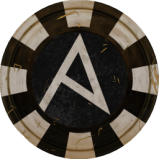

.thumb.png.0d87fc71cb8a644c5d862ceabac1e0d5.png)

